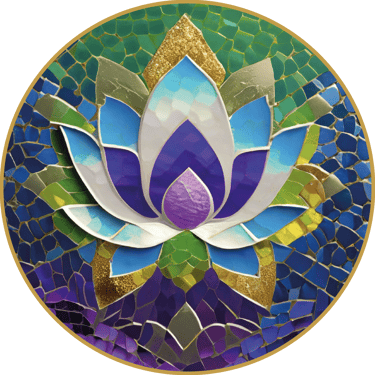Site currently being redeveloped! Relaunch coming soon!
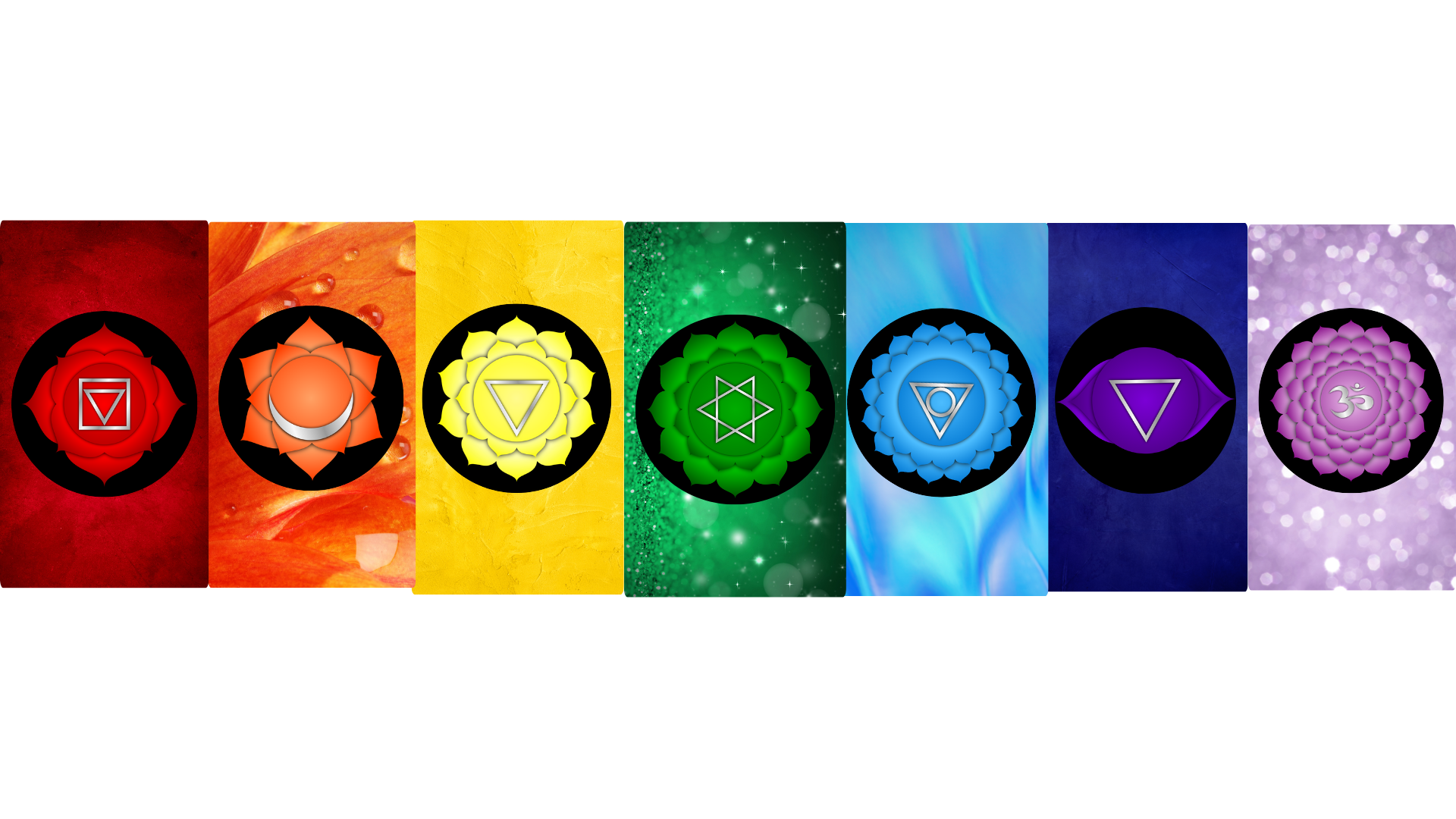
Disclaimer: Information about chakras is not supported by any medical evidence, and is purely based upon religious belief. You should do your own research. Read Terms and Conditions.
From a metaphorical perspective - if the aura can be explained as a layered 'energetic egg' with multiple sheilds for your body - the chakras are the wheels and the mechanism, and your body is the vehicle, with you as the driver of your destiny. As with any engine - each of the cogs plays a vital role in your overall health and wellbeing - mind body and spirit. NOTE: information is subjective and readers are advised to do their own research and reflection on the Chakras through Meditation.
About Chakras
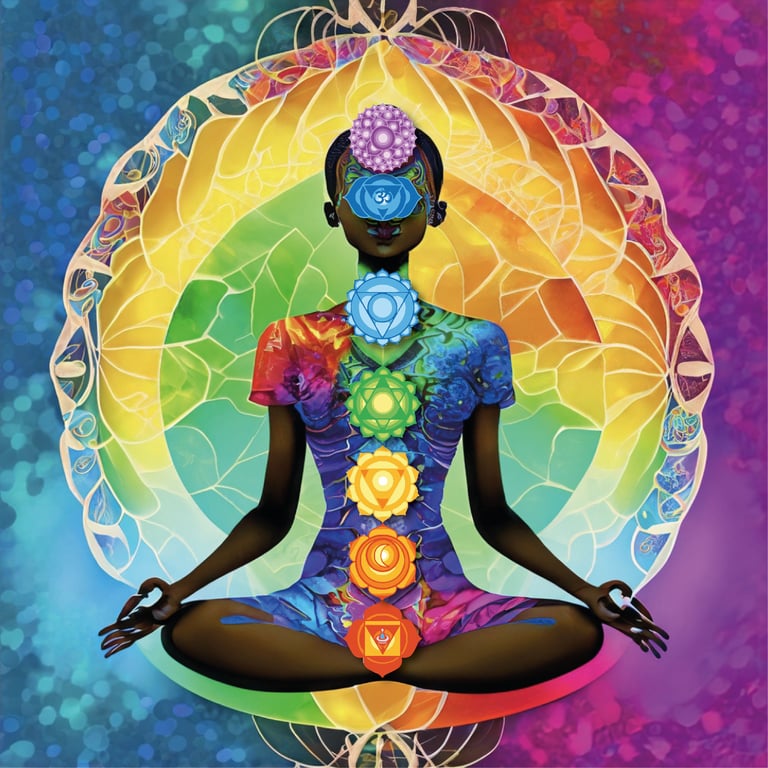





Base Chakra
Symbol: A four-petaled lotus flower, which typically has a square at the centre with a downward-pointing triangle within the square. The petals symbolise the four aspects of the human psyche: Mind (manas), Intellect (buddhi), consciousness (chitta) and the ego (ahamkara). The square represents the element of Earth, and physical existence, grounding, and Stability. The downward-pointing triangle represents the grounding force that anchors us in human existence. Some images contain the symbol 'lam’ in the centre, which depicts the seed mantra and a sound vibration associated with the Base Chakra.
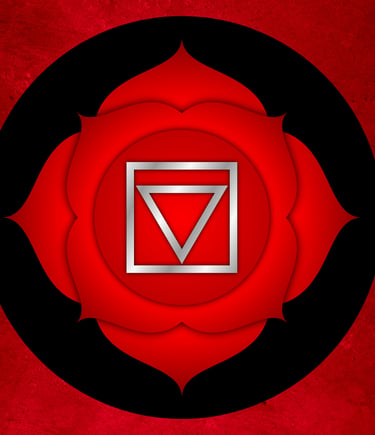

About
The Base Chakra is the first of the seven major chakras, and is located at the base of the spine. Its Sanskrit name is the "Muladhara Chakra". The word Muladhara is composed of two Sanskrit words: "mula," meaning "root", and "adhara," which translates to "support.” It is the body's survival centre and the most instinctual of all the chakras, and the foundation for all the other major chakras in the human body. It is named ‘root chakra’ because it provides a foundation to all the other primary chakras, in much the same way as when a person is building a high-rise building, unless the foundations are strong, the building will never be stable and is at risk of tumbling down at any time. It represents our feelings of security, safety, self-preservation, vitality, life, and, to some extent, strength and determination.
Location: Base of the Spine in the Perineum
Colour: A vibrant shade of red, but can also be represented with black. The colour black is usually represntative of the Earth Star or Bindi, however, the Base Chakra is a major chakra and many people will encompass the Earth Star qualities with the Base Chakra.
Physical Body/Organs: The Base Chakra governs the function and physical health of body organs and components primarily associated within the pubic area, as well as issues around mobility and procreation, and even motor skills, as these are all necessary for our human body to survive and thrive and so that we can support ourselves and our livelihood.
Coccyx (Tailbone), front and sides of the pubic region, genitals, anus, vagina, pelvic floor, bowel and urine movement, sexual function, childbirth/delivery, lower back, Stability (motion/movement/walking), body, bones, flesh, and skin, as these are all necessary for our bodies to survive, function well and support ourselves to cover our base needs.
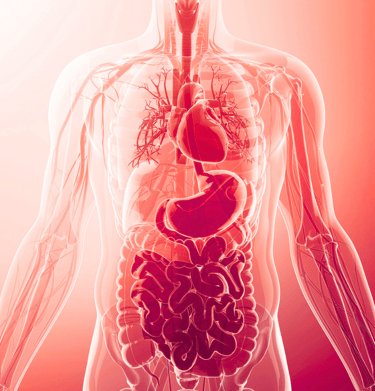

The base chakra is associated with the earth element, which is evident in practical ways. It oversees the base and the survival needs and is an instinctual chakra. Additionally, when functioning well, it supports a person to expand their awareness (including inner awareness) of what is happening internally with their body, such as ‘feeling spirit or energy’, or simply recognising when they are uncomfortable or unsafe so that they can shift to a safer environment as part of sustaining their lives. Instinct differs from intuition in that it is concerned with basic survival and responding to threats, such as whether a person should run from danger, hide from it, or fight back. Most people will recall a situation where they instinctively moved from one area to another and had a ‘lucky escape’. Animals tend to be more instinctual than humans and can feel the changes in weather patterns. The body instinctively knows what to do at the right time. The base chakra is also responsible for excretory functions, which help remove toxins from the body; if left, these toxins can cause physical and mental diseases.
Function
Function Disruptors
The base chakra can be impacted by experiences that threaten our life and our ability to meet our basic, fundamental, and primordial needs. As adults, the function can be affected by childhood experiences such as living in poverty or in life-threatening situations, such as a war zone. These experiences shape our beliefs, such as poverty and the feeling of never having enough, as well as feeling powerless, setting the foundations for unhealthy patterns of behaviour and thinking for the future, even when the threat no longer exists or has been removed. When our basic survival needs are not met, the base chakra can become imbalanced and dysfunctional, which can lead to health problems and difficulties in maintaining a positive outlook and experiencing happiness and joy throughout life. Other conditions that impact negatively on the root chakra function can include near-death experiences, violent attacks, serious diseases, physical abuse, ongoing financial struggles, loss of housing/accommodation and natural disasters.
Purpose/Function: Survive, Thrive, Self Preservation, Grounded, Practical, Physical and Financial Security
Assess Your Base Chakra Function
Signs of a Healthy Base Chakra
Generally speaking, people with a healthy base chakra are exceptional leaders, devoid of power and control issues. They are able to fill responsible roles and retain the respect of others. They can work independently, with authority or as part of a team. They are good with money, maintain a healthy work life balance, and are able to sustain healthy relationships.
Emotional: stable, safe, secure, and connected to other people, with a sense of ‘belonging’, Trust and Acceptance of their place in the world, grounded and practical.
Physical: People with a healthy base chakra experience overall good physical health,while they may experience intermittent muscule, or skeletal health issues (or any health issues in the Base chakra region) they are usually temporary, and a reminder to review and reflect on their overall health, mindset, and emotional space, or as a signal that something needs to be addressed in their lives. A time for a review.
Behaviour: Self-preserving, Survival Mindset, Vitality, and Will to live. Confident, energetic, emotionally strong, purposeful, and purpose-driven. Independent, Assertive, Persistent, with Leadership qualities, pioneering, and fearlessness. Takes care of their bodies and well-being in a non-obsessive way.
You can assess the function of your Base Chakra through observation and reflection. Chakra Dysfunction becomes apparent through the thoughts and emotions we hold, as will as physical ailments and injuries, and the way we respond to outside or external triggers (our behaviour). Below, you will find some pointers for assessing your chakra function and some reflective questions. You don't need to tell anyone your answers to the questions; however, it is essential when aiming to achieve your true potential to be completely honest with yourself.


Signs of a blocked or imbalanced base chakra
Emotional: Anxiety, Depression, feeling disconnected and isolated, self-pity and victim mentality; poverty mentality and greed for money and material things, feelings of aimlessness, lack of purpose and lack of ambition and life direction, low or weakened will to live, thoughts of self-harm, nervousness, low enthusiasm, immunity disorders, feeling unsafe, and insecure (especially around ability to survive and provide for self, feeling stuck with an inability to take action, feeling powerless, Panic Attacks, phobias, feeling abandoned and unsupported.
Physical: low energy, low vitality, back and lower leg pain, lethargy, fatigue, lack of motivation, constipation, detoxification problems, bowel, bladder, colon, or anal problems, under- or overactive libido, light-headedness, dizziness, inexplicable pain in the lower abdomen and pelvis, reproductive issues, insomnia, or excessive sleeping, mobility or skeletal problems such as arthritis, or problems with feet, and walking.
Behavioural: Hoarding (Material Items); Wilful and imposing, power hungry, intimidation, Lone Operator, Destructive, Arrogant and Authoritarian, Domineering,), obsessive compulsive disorders, sexual fetishes (especially anal), power and control issues (and a desire to dominate others), inability to focus and concentrate and easily distracted from purposes and tasks, rushing from one task to another, Financial instability and difficulty managing money.
Reflective Questions for the Base Chakra
Am I controlling? or resistant to control?
Do I attempt to manipulate people to do things that I want them to and if they refuse, do I get angry and potentially use force?
Am I violent with myself and others?
Am I assertive, or am I too frightened to assert because I fear a violent reaction (or negative judgement of others?)
Am I idle or inactive? Do I procrastinate?
Have I ever been accused of being arrogant or domineering?
Do I react angrily and defensively to criticism and judgement by others?
What is my attitude to money- Am I overmaterialistic, or have I decided to ignore the material world and find myself living in poverty?
Do I procrastinate or avoid my responsibilities?
Do I hurt myself to feel emotions or release them?
Am I awkward around other people and uncomfortable with personal demonstrations of affection such as hugs?
Do I feel locked into negative and unhealthy situations and relationships?
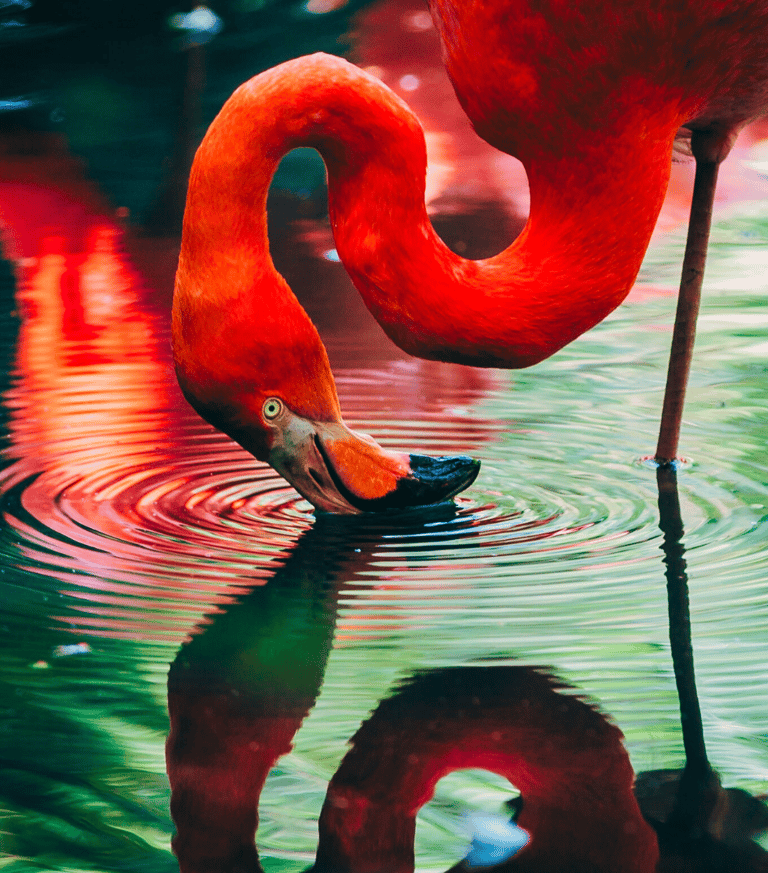



Sacral Chakra
Symbol: A six-petaled lotus flower, with inner circles, and a crescent moon. The circles represent that life is cyclical— an ongoing series of life, death, and rebirth. The six petals represent the six negative aspects of human nature that we must overcome to bring balance to our mind and physical body. VAM (pronounced "VUM", rhyming with "DRUM") is the seed mantra that carries the healing sound vibration for the Sacral Chakra, promoting creativity, joy, and sensuality.
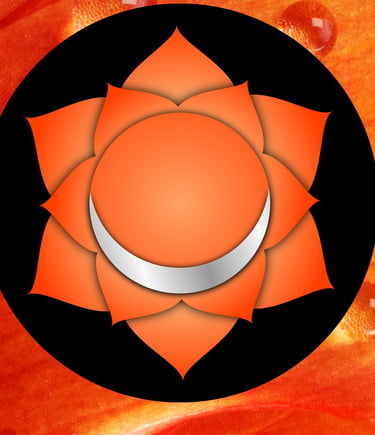

About
The Sacral Chakra is the second of the seven major chakras. Its Sanskrit name is the "Svadhishthana Chakra". Its name translates as 'dwelling place of the Self,' and it is associated with our personal identity, who we are. It governs the emotional energy of a person, as well as creativity and the levels of acceptance and resistance within them, and their ability to adapt to change throughout their life path. Where the Base chakra is instinctual and about 'doing', the Sacral chakra is associated with feelings and emotions, and probably the first of the chakras where we can consciously demonstrate freedom of choice and will in how we respond to circumstances.
Location: : It is located in the lower abdomen, about four finger-breadths below the navel, and just above the pubic area (base chakra).
Colour: Symbolised with a vibrant shade of orange.
Physical Body/Organs: While the sacral chakra governs the organs situated within its location, such as the ovaries and fallopian tubes for women, as well as the uterus and muscles within the region, it can also impact the health and condition throughout the body in the other areas governed by other chakras, such as the liver and kidneys which are situated in the solar plexus, and the bowel and bladder excretionary systems. This is because the sacral chakra is the first point of detoxification
Purpose/Function: Identity, Sensitivity, Emotions, Reproduction, Passion, Creativity, Pleasure, Joy, Fear,/Safety
Bladder, kidneys, reproductive organs, and small intestine, rectum, appendix, and lower colon.
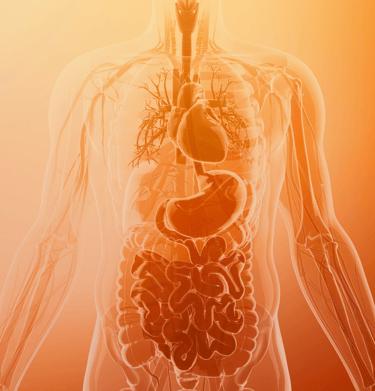

The Sacral Chakra is associated both physically and symbolically with the element of water. From an energetic perspective, water represents emotions; however, within the body, water is a vital life force and fundamental to both survival, health, and wellbeing. The sacral chakra regulates the body's hydration function. When we drink water, it travels to the small intestine, where it is absorbed and distributed throughout the body to provide nutrients to the physical body and promote healthy function, or to flush out toxins and waste. When our body becomes undersaturated, we can experience symptoms of fatigue and lethargy. At the same time, an over-saturation can result in levels of hyperactivity. As an emotional centre, it governs the way we express our feelings and connect to others, and is central to inspiring and motivating creativity in all forms, as part of being our 'authentic selves'. It governs our self-image and how we relate to other people, and is the centre of passion which can be either positive or negative when misdirected, as well as procreation, and is the first 'intuitive' chakra as opposed to 'instinctual'.
When it is out of balance, it will have a 'flow on effect', where toxins can build up and be stored in the body, which then creates a 'rotting' effect, or toxification of the body system that creates further health issues. This is why, when treating many conditions (including physical and mental illnesses), a person would be wise to work with the orange chakra as well. For example, Depression is believed by metaphysicians to be first linked to the sacral chakra with a resistance to change, and then to the throat chakra with an inabilty to express emotions (especially pain), and when in chronic stages can impact upon the solar plexus (with al ack of faith in the processes of life), and a lack of forgiveness (to the universe or other people) which impacts upon the heart, and finally upon the crown chakra, with a belief in limitation and pain and powerlessness, where the neural pathways and patterning become 'set' until repatterning and a significant shift in beliefs occurs.
Function
Function Disruptors
The Sacral Chakra can become over- or underactive, so when referring to the function of the Sacral Chakra, it is not necessarily blocked (if ever), but instead is simply out of balance. While there are potentially many emotional or physical experiences that can cause chakra imbalance, hydration is one of the primary factors that start off as mild symptoms but can become life-threatening when hydration is ignored, especially over the long term. This is because poor hydration or overhydration can impact kidney and liver function, and the inability to remove toxins from the body, and consequently impact other chakras and body organs. Unhealthy relationships will affect the chakra function, such as toxic and abusive relationships, especially the relationship between a parent and child, where a child is continually neglected and abused, emotionally or physically, and later with poor selection around intimate partners, or if a person has been a victim of a sexual assault. If a person's sense of identity is closely tied to material success, the sacral chakra will also be affected and negatively impacted when they experience financial struggles and difficulties. As a chakra of 'pleasure', it is the first to be affected by unhealthy pleasure seeking, such as overimbing in alcohol and substances such as drugs,
Assess Your Sacral Chakra Function
Signs of a Healthy Sacral Chakra
Emotionally balanced, creative, artistic, sensuous, and comfortable with gender, intimacy, and sexuality. Passionate, motivated, and inspired. Alive, joyful, and happy. Emotionally responsible, self-aware (knows triggers and manages emotional responses effectively). Positive, and motivated.
Behaviour: Humour and laughter, joyfulness, artistic, dramatic, colourful, and unconventional, with a caring and nurturing nature towards others (and oneself), balanced activity, courage, comfort with sex and intimate acts, and the ability to set and maintain healthy relationship boundaries, as well as being a problem solver and solution finder. Responsible – knows when to hold on and when to let go of situations. Ability to accept change and go with the flow. Compassionate, proactive, balanced perspective on emotional situations, humane, acts on intuition.
Signs of an Imbalanced Sacral Chakra
Emotional: Joylessness, lack of pleasure, intimacy issues, relationship problems, emotional instability and disconnection from self or others, reduced creativity, loneliness, feeling isolated, anxiety, low libido, fearful, insecure, burdens of shame and guilt, often overwhelmed emotionally with difficulty processing and managing them, feeling purposeless and aimless, uninspired and unmotivated, mood and personality disorders, difficulty sustaining relationships, resistant to change
Physical: lethargic, low energy, fatigue, diverticulitis, ovarian cysts, or kidney stones, impacted stool formation, fallopian problems, rectal problems, appendix issues. Issues associated with dehydration: dizziness and light-headedness, headaches, dry mouth, dark urine, infrequent urination, thirst, drowsiness and confusion, rapid heart beat, dry and shrivelled skin, cold hands and feet, confusion and irritability. Anaemia, Chronic lower back pain, genital health issues or dysfunction, arthritis, spleen, Premenstrual syndrome, sinus, over or inhibited libido, Joint and cartilage pain and problems, addictions including sexual.
Physical issues with overhydration: nausea, vomiting, stomach bloating, headaches, drowsiness, muscle weakness and cramps, confusion, dizziness, edema (swelling of feet, hands and belly), kidney and livers disease, congestive heart failure,
Under active chakra: concerned with physical ailments, including lower back pain, hip pain, bladder and kidney infections, prostate or gynaecological problems.
Overactive Sacral Chakra: Focused on the emotional – with issues around emotional balance, self-awareness, processing and managing emotions, as well as a lack of creativity (especially regarding problem-solving), emotional manipulation.
Behaviour: Irresponsible (blames others), melodramatic, Self Harm/ Self Sabotage, inappropriate sexual behaviour and expression, poor boundaries, Moodiness (highs and lows), Anger and angry outbursts (significant combative reactions), Drama seeking and trouble making, Exhibitionism, poor impulse control, attachment disorders (and being overly affectionate tot hose that do not reciprocate or undervaluing people who are genuinely caring and concerned for the person), procrastination, self absorbed, unreliable, poor impulse control, hypochondria, and detachment disorders, dependency or co -dependency issues.
You can assess the function of your Sacral Chakra through observation and reflection. Chakra Dysfunction becomes apparent through the thoughts and emotions we hold and the way we respond to outside or external triggers (our behaviour). Below, you will find some pointers for assessing your chakra function and some reflective questions. You don't need to tell anyone your answers to the questions; however, it is essential when aiming to achieve your true potential to be completely honest with yourself.
Healing and Reflective Questions for the Sacral Chakra
Do I attempt to manipulate people to do things that I want them to and if they refuse, do I get angry and potentially use force?
Do I notice my feelings BEFORE they overwhelm me?
Am I paralysed by fear (known or unknown?)
Do I struggle to feel emotions? Do I repress my emotions ?
Am I frightened by my feelings? Do I have mood disorders?
Do I hurt myself to feel emotions or release them?
Am I awkward around other people and uncomfortable with personal demonstrations of affection such as hugs?
Am I more interested in momentary pleasure than long term joy?
Am I impulsive and then regret the things I do and filled with shame and embarrassment over my past?
Do I blame others for how I feel?
Do I take responsibility for my emotions and actions?
Am I sexually inhibited or extroverted and does my sexual behaviours interfere with my enjoyment of life?
Do I have physical health issues such as back pain or abdominal issues situated in the body between the belly button and the groin? (these indicate blockages),


AM I COMFORTABLE WITH MY FEELINGS?

Solar Plexus Chakra
Symbol: A ten -petalled lotus flower, which bears the letters da, dha, na, ta, tha, da, ha, na, pa, and pha upon them. A downward pointing triangle (usually red) sits in the middle of it, to symbolise the earth element of fire. It is associated with the healing sound "AH". Some images contain the symbol 'Ram in the centre which is a representation of the 'seed mantra' and a sound vibration associated with the Solar Plexus Chakra.
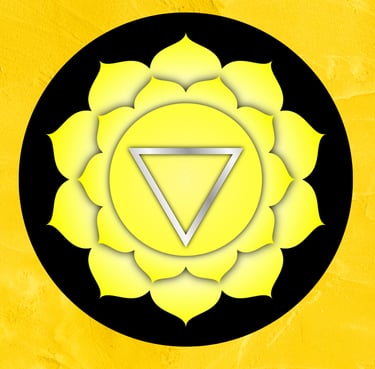

The Solar Plexus chakra is centred within the human body around the navel, along the spine. It is the third (and one of the largest) of the seven major chakras in the chakra system. Its Sanskrit name is "Manipura Chakra". "Mani" translates to shining gem, where "pura' means 'the place'. A literal translation is the 'place of the shining gem'. It is the centre of Will and considered to be a chakra and energy space of 'personal power'. It is associated with the element of fire, which is also the brightest. It is credited with extending the fire of passion and motivation (in the sacral Chakra) through the body. It is a centre of 'knowing' and knowledge, and discernment between fact and fiction, along with decision making and choices and the start of decisive action, albeit intuitively or consciously. That being said, a dysfunctional solar plexus, or a blocked solar plexus, can result in ignoring this power of decision-making and handing it over to others. It is the Chakra for 'gut instinct'. For example, sometimes in life the path becomes a 'fork in the road' and a choice between two (or more) new directions. A person can sit at the fork, or choose a path, and before they choose, they may be attempting to work out which one 'feels right' to walk. They reflect on the two choices, and one will give them butterflies in the pit of their stomach, while the other may give them a heaviness or a 'knowing'
About
Purpose/Function: Intellect, Clarity, Faith, Hope, Trust, Confidence, Assertiveness, Personal Power, Self Discipline, Strength of Mind, Manifestation
You may have experienced this 'knowing' when you're told something and a thought instantly comes to mind, followed by the instinctual response, 'I know how this is going to end.' And it doesn't matter what anyone says or what else comes into the picture; you just know. It might not be the ending you want. So, you might talk yourself into believing something different or even tell yourself that your initial response was 'wrong', but as time passes, you recognise that you 'knew all along', and your initial response was the 'right' answer. By ignoring that response, you were simply trying to either take control of the situation and force your will or accommodate other people's emotional needs. This is problematic because the 'knowing' is actually an intuitive voice and your own internal guidance. Sometimes this inner 'knowing' can be called 'mothers instinct', where a mother can automatically see risks for their children, and this doesn't mean that they simply 'release and let go', there are certain actions that must be taken for 'child protection', because a 'knowing' doesn't always mean that there is no choice around actions, instead it means there is a choice about emotional reactions to events. The yellow Chakra also represents youth, new beginnings, and rebirth
Location: It sits approximately four finger breadths above the navel (and below the rib cage) and below the navel (above the pubic area).
Colour: Sunny Yellow
Physical: The solar plexus primarily oversees the functioning of the upper abdomen and the organs and structures within it, including the middle back/vertebral skeletal structures, the digestive tract, and the intestines. It is within the solar plexus that we start to see crossover between organ functions and the chakras. The sacral chakra governs the physical functioning of the lower abdomen and the organs within it, and is primarily an emotional chakra. The solar plexus chakra is influenced by the emotional state, which can impact the function of the organs such as the liver, gall bladder, and kidneys. The intestines are responsible for the absorption of nutrients into the body. Where there is an immune disorder (governed by the crown or the throat) that prevents the absorption of certain minerals and vitamins, there may be an impact upon the higher chakras. For example, the endocrine system, which supports overall immunity and immune function, is situated in the upper chakras, and these have an impact on the solar plexus function (and capacity to absorb nutrients and vitamins). A person would work with the solar plexus and the other chakras, depending on the condition, such as the throat for thyroid function, the solar plexus, the crown and even the heart and higher heart chakras, primarily if the body is exhibiting health issues within any of them. Often with immune conditions, there are long-term effects on heart and lung function as a person ages and matures, or in other health conditions, there can be damage to brain function and overall motor function due to nutritional deficiencies. While some of the body's chemical and cellular make-up is not 'mineral or vitamin', for natural function, the body needs specific vitamins to maintain cellular function, such as vitamin D, which is a necessary requirement for the body to create melatonin.. Ideally, we would be able to add Vitamin D to the body to encourage natural melatonin creation; however, a person can now purchase melatonin supplements. If the body is low in melatonin, then the person may experience Insomnia and sleeplessness (which then may impact negatively upon the sacral chakra – due to anxiety and escalated emotional states, which then cloud the capacity to make healthy judgements). It is for these reasons that a person would be wise to work with all chakras at the same time because they are interactive.
Function
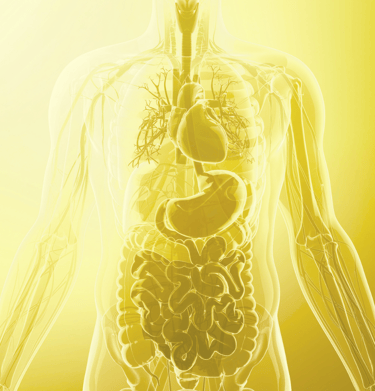

The Solar Plexus chakra is considered a fire element, and associated with the sun, creating an energetic warmth within and allowing for 'warm feelings'. A healthy solar plexus is the vehicle through which our heart Chakra open to the giving and receiving of love. Energetically not only is there a physical digestive aspect to the solar plexus chakra but also the digestion and processing of information including emotions, and this is the links to the intellect, and study/learning. Students will work with both the crown and the solar plexus. Ego is also associated with the Solar plexus, as this is a chakra of choice and decision-making. We can operate from the small self (being self-absorbed and bogged down in materialism) or from the conscious and aware self – with respect toward others. It is a centre of gathered wisdom in the form of lived experience, that provides the courage, faith, trust and hope
Function Disruptors
Deprivation of sunlight (vitamin D deficiency); lack of balance between work/play can result in burnout and fatigue. Failure to develop the yellow Chakra can lead to issues with power and control. Imbalances in the base and sacral Chakrachakras can impact the Solar Plexus chakra by clouding judgement with emotion and instinct, rather than approaching problems from a space of discernment. The solar plexus can also be disrupted by activities and people in the environment, where there has been a significant emotional reaction or response to the actions. Environmental factors will generally disrupt temporarily however, where there has been enduring harm, the Chakra can become blocked. Factors that can block the Solar Plexus can include feeling powerless within relationships, such as being involved in an abusive marriage, or childhood abuse and trauma, workplace bullying and mobbing, living in an unsafe or volatile environment. Where abuse or threat to survival and safety is enduring, the feeling of being powerless can also be enduring.
Upper Intestine, Digestive Tract, outer Adrenals, pancreas, including the stomach, small and large intestines, kidneys, pancreas, liver, and gallbladder, metabolism and processing, mineral and vitamin processing
Assess Your Solar Plexus Chakra Function
You can assess the function of your Solar Plexus Chakra through observation and reflection. Chakra Dysfunction becomes apparent through the thoughts and emotions we hold and the way we respond to outside or external triggers (our behaviour). Below, you will find some pointers for assessing your chakra function and some reflective questions. You don't need to tell anyone your answers to the questions; however, it is essential when aiming to achieve your true potential to be completely honest with yourself.
Signs of an Imbalanced Solar Plexus Chakra
Emotional: low self-confidence, feeling hopeless, loss of faith, distrust of people, low self-esteem, insecurity, feeling like a victim, and self-pity, inability to discern or trust own judgement, fearful, weak, vulnerable, anger and volatility.
Physical: Indigestion, Irritable Bowel Syndrome, Diabetes, Pancreas, Liver, Colon, Heartburn, weight fluctuations (especially excess weight gain), bleeding or sensitive gums, ulcers, hypoglycaemia, digestive disorders.
Behavioural: Eating Disorders, rigid and controlling behaviours, bullying (or repetitive victimisation), inflexibility, stubbornness, poor boundaries (difficulty saying no and prioritising self care), justifying other peoples harmful behaviour to yourself, neediness and ongoing requirement for validation and approval from others, overanalysis (paralysis by analysis), procrastination, investing emotionally and forming attachments with people who do not reciprocate or do not value you, aimless, unmotivated, uninspired.
Signs of a Healthy Solar Plexus Chakra
Emotional: Strong sense of self confidence, self-worth and self-value, clear sense of purpose and identity, empowered, resilient (and capable of navigating challenges and changing circumstances), discerning and able to assess people and situations reliably (trusts in own decision making), fortunate and upbeat, clear thinking, capable and willing to take risks, optimistic, excitement, and happiness.
Physical: Healthy digestion and metabolism, healthy liver, kidneys, pancreas, blood sugar and nutrient absorption, healthy chemical balance in the brain, healthy brain function (information processing and memory recall), healthy cognitive processing.
Behavioural: Assertive, aggressive toward goals, determined, ability to harness the energy of strong emotions and direct to positive pursuits, resilient (bounces back after 'falls'), willing to commit, trustworthy, integrity, courageous, analytical, purposeful action, pays attention to physical health and health care, creates a work/life balance, depression, attentive to diet and nutritional needs, knowledge seeker, strong will power and self-discipline, impulse control, respect for conflicting view points and other people. Willingness to take risks (informed decision making) and to take responsibility for decisions and choices. Healthy relationship boundaries, concise and clear thinking, critical thinking abilities, independence, walking the talk (integrity), manifestation (achieving success), self-confidence, and self-motivation.
Healing and Reflective Questions for the Solar Plexus Chakra
Do I act upon my hunches?
Am I responding to my inner guidance?
Do I ignore my own guidance and do as others tell me I should?
Do I trust my own decision making?
Am I willing to be a powerful person?
Do I allow my fear stop me from developing and reaching my potential?
Are my relationships with others problematic- do I feel taken advantage of?
Do I see other people’s boundaries and do I respect them?
Do I find myself justifying and explaining to others why I make personal decisions?
Do I hide myself and my potential to accommodate other people’s emotional needs?
Do I make excuses for not doing and achieving my goals? “I would if I could but I can’t so I won’t/ don’t do..”
Do I allow my perceptions of past betrayals to dictate my present and my future?
Do I believe that I am a victim of life?
Do I believe that money solves problems or creates problems?
What is my attitude to wealth and Power?
Am I willing to take the steps I need to take to develop my potential and reclaim my power?
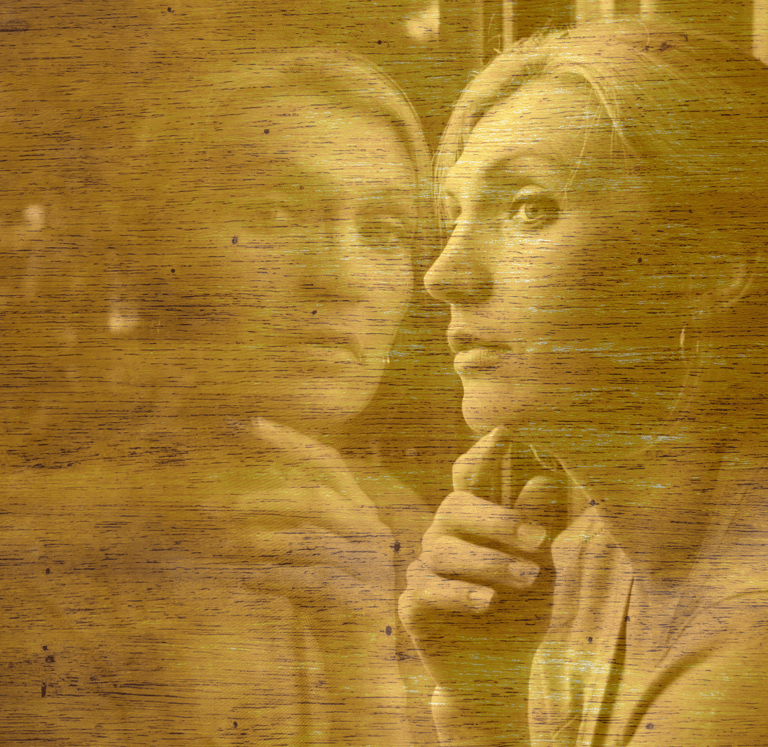

DO I FEEL POWERLESS? DO I FEEL VICTIMISED?

Heart Chakra
Symbol: A twelve-petalled lotus flower surrounding a six-pointed star, with the letter “Yam” in the middle. Each petal symbolises the twelve qualities of the heart: love, peace, empathy, forgiveness, patience and harmony. The star is constructed from two triangles - a downward-pointing triangle representing the feminine, and an upward-pointing triangle representing the masculine. The star represents the union and balance of both the material world and the spiritual world, or the unification and linking of the mind (purpose, intention, beliefs) to the emotions and love, acting as a bridge between the earthly chakras and the higher and lighter chakras
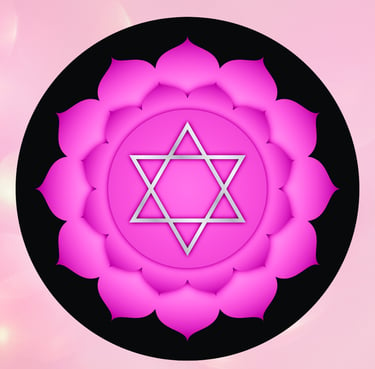

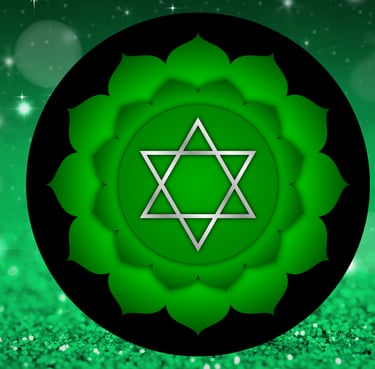

About
The heart chakra is the fourth of the seven major chakras in the human body. It is associated with the element of water. In Sanskrit, it is called the ‘Anahata’ Chakra, meaning ‘unstuck’. It is where we begin to cultivate a greater sense of self-awareness and develop meaningful relationships. It is the first of the chakras that carries ‘duality’. The first chakras (or ‘lower’ chakras) are focused on the self, where the higher chakras are energetically focused on self as well as compassion and empathy (and consideration of others). The heart chakra is a crucial energy centre for connecting to ‘Divine and Source Energy’, and for empowerment. It is important because the heart centre acts as a bridge to the higher chakras, and secondly, because it is through the power of love that we can connect to the Divine Love, and to feel and experience pure, unadulterated, unconditional love. To summarise, the heart chakra is where we join the ‘I’ with the ‘you’ and emotionally connect to the ‘us’, recognising that we are all aspects of the divine. It is through this recognition that we can connect to the Divine.
Purpose/Function: Goodness, Compromise and Beauty, Forgiveness, Respect, Acceptance, Love , Relationships
Location: Central within the chest area, close to the heart, the heart chakra is about the size of an average dinner plate and centred at the bottom-most point of the cleavage, or the base of the ribcage.
Colour: Many people are not aware that the heart chakra is both pink and green and that the pink is associated with the self, where the green is associated with other people (and the nature kingdom). A balanced and healthy heart chakra has a balance of green and pink within it. The green of the heart chakra is an emerald type green and reflects the ‘outward love’ or the ‘giving of love to others, being a compassionate, and empathetic person. The pink of the heart chakra reflects self-love, the capacity to accept self in its current state and recognise that the self is a product of life experiences, and is in a constant state of evolution and that the concept of a ‘perfect human’ is unrealistic.
Physical: Heart, rib cage, upper back vertebrate, lungs, liver, spleen and gallbladder, and some digestive ailments such as ‘heart burn’ or gastric reflux.
Function:
Function Disruptors
The heart chakra is about love–giving and accepting, or receiving, which is why it is the first of the ‘dual’ chakras, as it is where we start thinking and believing in more than ourselves. To receive love, we must be able to give love and hold love, compassion, and kindness toward ourselves. Love is multilayered and includes aspects of compassion, empathy, forgiveness, and acceptance. It comes in a variety of forms, from parental love toward a child or the child’s love for a parent, to their friends, and, of course, romantic partnerships. It can also include the love of friends and those people we feel are ‘family’. Trust (centred in the solar plexus) is vital to healthy loving relationships. Part of giving and being loving involves being comfortable with being vulnerable – and open to having the ‘deeper’ loving relationships. When we can balance the energy of the heart chakra, we can tap into the power of Divine Love in its most pure form – devoid of attachment to outcomes and expectations. We become ‘unstuck’ from the emotional wounds and past traumas, as well as any limiting beliefs that block us from moving forward in our life's purpose and soul journey.
The heart chakra (when balanced and fully open) is also a means to connect with our spirit Guides and Guardians for divine messages of guidance in the most reliable way. It is associated with the psychic gift of clairsentience, which is the ability to feel emotions. Words can often differ from intention, but when a person can feel the feelings behind the words, truth is revealed. The heart chakra is a chakra of discernment, determining what is love and loving versus what isn’t, based on the energy's feel and how to distinguish between loving and fear-based or unloving energy.
The heart chakra is the most easily disrupted by life experiences and distorted perceptions of what love is, as well as betrayals and breaches of trust, or when a lack of self-valueself-value allows people to treat us in ways that are devoid of basic kindness and care. On the other side,, there areare the unreasonable expectations we may hold of people about how they should demonstrate their love and affection for us, which leads to feelings of disappointment and suffering. Unreasonable expectations are a lack of acceptance of people for who and what they are, and often a desire to control those around us. Feelings of powerlessness or victimhood will impact and disrupt the heart chakra, as will a lack of emotional regulation.
A dysfunctional solar plexus can disrupt the function of the Heart chakra, often occurring when a person experiences a crisis of faith or betrayal. Unrequited love and a lack of discernment about associations can also disrupt a person’s capacity to give and receive love. Breaches of trust can impact our capacity to extend love to others and also to love ourselves. Often, when a person experiences betrayal by a loved one, they can turn that grief and pain inward and blame themselves for not realising that the person was untrustworthy (because there are usually indicators that go unseen when a person is wearing the ‘love goggles’). Holding onto blame (of self and others) creates a block or disruption in the heart chakra, and forgiveness is vital for unblocking it. Acceptance is the key and the first step to healing from betrayal. It involves taking a non-judgmental approach and recognising that the experience carries blessings and lessons, as well as an effort to be kind. If you are blaming yourself and your mind chatter says “I am stupid – I should have seen the signs”, then that mind chatter can be converted to “I was naïve, but now I know better.
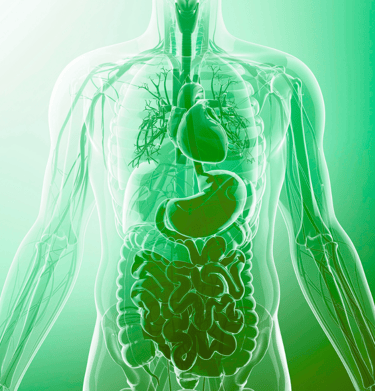

Heart, lungs,
Assess Your Heart Chakra Function
You can assess the function of your Heart Chakra through observation and reflection. Chakra Dysfunction becomes apparent through the thoughts and emotions we hold and the way we respond to outside or external triggers (our behaviour). Below, you will find some pointers for assessing your chakra function and some reflective questions. You don't need to tell anyone your answers to the questions; however, it is essential when aiming to achieve your true potential to be completely honest with yourself.
Signs of a Healthy Heart Chakra
Emotionally: sincere, compassionate, non-judgemental, comfortable with emotional expression and feeling vulnerable. Openness to giving love and receiving it. Healthy self-esteem. Acceptance of oneself and others, along with good time management that allows for self-nurturing. Joyfulness and happiness.
Physical: Ability to sustain holding breath, breath regulation, regulated blood flow and healthy blood circulation, healthy cardio, skeletal, and respiratory systems.
Behavioural: Optimistic, Creators of beauty, respect for boundaries (personal and other people's), Kind and Caring, appreciative, gracious and grateful, willingness to acknowledge and respond to the efforts of others, ability to see blessings and find the silver lining within all ‘problems’,
Signs of a Dysfunctional or Blocked Heart Chakra
Emotional: Fear of rejection, Lack of trust in a committed relationship, Issues with giving and receiving affection, Over-dependency in a relationship, Lacking Empathy, Lacking Compassion, Obstinance, Guilt, Shame, Low Self-Esteem, Feeling Worthless and Unlovable, Inability to forgive (Self and Others), Unrealistic expectations of self and others, misery, and ingratitude
Physical: Heart and Lung conditions, poor blood circulation, Heart Pain, Angina, Muscular pain (in the upper thorax), spinal problems (upper vertebrate), asthma, breast cancers, pneumonia, chest infections, Heartburn, Reflux, breast cancer
Behavioural: Selfishness, self-absorption, emotional insensitivity, acting ‘tough’, unreasonable expectations of others (especially emotionally), emotional manipulation, intolerance, discomfort with personal demonstrations of affection, absentmindedness and disorganisation, poor time management or life balance, where there is no time for self-care, conflictual relationships, co-dependency, submissiveness (or domineering), incessant complaining, lack of appreciation (of self and others), unable to see blessings.
Healing and Reflective Questions for the Heart Chakra
Do I put myself last, devoting time to everyone else with none left for me?
Do I feel unworthy of being loved and adored?
Do I withdraw my love from people who disappointment me?
Do I judge myself harshly for failing to meet my expectations?
Do I struggle to look myself in the eye? Am I ashamed of my body?
Am I ashamed of ME?
Do I speak unlovingly to myself?
Am I overly critical of myself?
Do I hide my feelings?
Am I comfortable expressing love and affection?
Am I kind to animals and vulnerable people?
Have I allowed myself to become bitter and resentful at others?
Are the people I Iove preventing me from being loving to them?
Is there anyone in my physical life that shows me love and affection?
Do I allow others to mistreat my love and affection?


DO I LIKE ME? DO I REALISE I AM LOVED, LOVING AND LOVABLE?

Higher Heart Chakra
About
The Higher Heart chakra is one of the minor chakras in the energy body; however, it is no less important than all the other major chakras. It is not one of the major chakras – it sits within the space at the top of the heart chakra, and moves toward the throat chakra. In many ways, it is a messenger chakra, in that once a person understands their physical body and emotional self, they can identify blocks to achieving balance within the higher chakras of divine communication. Many of the Indigenous groups (especially the Aboriginal People of Australia) state that they do not believe in mental illness but rather that a person’s suffering is due to a ‘broken spirit’, and when doing so, they invariably tap the higher heart chakra with their fingers and speak of the ‘pain in their heart’. Some people refer to this chakra as the “Ascended Heart Chakra.”
Location: The Upper Chest area (in between the throat and heart chakras) is positioned above the thymus gland. It sits about two fingers above the top of the cleavage.
Colour: Lime / Neon Green
Physical: Thymus Gland, Lungs, esophagus (swallowing/digestion), upper back (spine/vertebrate), skin conditions and disorders
Unification of the love of the heart, to the throat and crown, alignment of personal will with Divine Will, and acting from a space of integrity and truth, authenticity and faith in the Divine, recognition of blessings seen and unseen.
Function:
Grief and suffering, Repeated trauma, a crisis of faith, bullying and harassment, denial of freedom, loss of liberty, repeated victimisation, family breakdown, relationship trauma,
Functional Disruptors
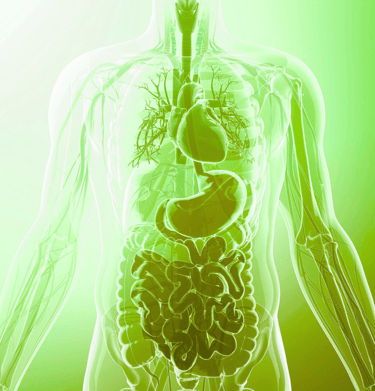

Assess Your Higher Heart Chakra Function
You can assess the function of your Higher Heart Chakra through observation and reflection. Chakra Dysfunction becomes apparent through the thoughts and emotions we hold and the way we respond to outside or external triggers (our behaviour). Below, you will find some pointers for assessing your chakra function and some reflective questions. You don't need to tell anyone your answers to the questions; however, it is essential when aiming to achieve your true potential to be completely honest with yourself.
Signs of a Healthy Higher Heart Chakra
Ability to sustain relationships and interact with other people, especially in social settings. Comfortable in most social settings.
Emotional: comfort in various social settings, with the ability to engage with people from a wide variety of settings. Emotionally intelligent and able to unpack and process feelings and not personalise events. Willingness to be vulnerable, but also capable of discerning who and what are healthy relationships, when to invest and when to withdraw, healthy relationship boundaries. Positive attitude toward life, and hopeful for the future, lives in meaningful and purposeful ways, and can remain present and enjoy each moment.
Physical: Healthy functioning body organs and metabolism, including cardiovascular, respiratory, swallowing and immune system.
Behavioural: Willingness to be vulnerable and take risks in new relationships. Capacity to convert emotional pain and the pain of lost love to a positive outcome (for instance, the survivors of trauma and war, who actively work toward peaceful solutions for the greater good), and desire to create positive and empowering changes for the collective. For instance, advocates and activists strive to create systemic change for vulnerable individuals who lack the means to create healthy conditions for themselves due to social barriers. Acceptance of difficult situations and the ability to create positive outcomes from them.


Signs of a Blocked or Dysfunctional Higher Heart Chakra
Emotional: Panic attacks, Distrust of other people, fear of being in social settings and environments, Fear of group settings, fear of loss of loved ones, fear of anything to do with any form of relationship, fear of being misunderstood by people around them, deep enduring mourning (for lost loved ones), hopelessness, crisis of faith, despair, and depression.
Physical: pain in the area of the chakra, exacerbated or rapid breathing, heart burn, shortness of breath, chest pain, persistent cough, hoarse voice, facial or neck swelling, immune disorders, frequent infections, skin infections and recurring cysts, dysphagia, or swallowing disorders, Vena Cava syndrome, Di George syndrome, Mediastinal masses, and thymus cancer, Myasthenia Gravis, Anaemia, antibody deficiency, autoimmune conditions, lymphatic cancer, involuntary muscle actions and tics, susceptibility to infections.
Behavioural: Social withdrawal, Isolation, (preference of being alone rather than with people) avoidance of group activities and group settings unless it is ‘family’, and even within family there may be a desire to disengage, substance use and abuse as part of soothing emotional pain and trauma, rumination (spending long periods of time revisiting the lost past), avoidance of situations that might cause grief, some manic behaviours and mood disorders, Obsessive Compulsive Disorders, lacking in purpose and life direction, scattered and disorganised.
Healing and Reflective Questions for the Higher Heart Chakra
Do I socially isolate?
Am I frightened of forming relationships with people?
Do I experience panic attacks or rapid breathing when I enter new social settings?
Am I comfortable with being vulnerable with others?
Do I lose myself in my thoughts and memories of the past?
Do I struggle to experience feelings of joy and happiness?
Am I hopeful about the future?
Do I have faith and belief in the universe?
Am I resistant to relationship changes?
Have I allowed myself to become hard because of past relationship loss or breakdown?
Am I overly cautious or paranoid when interacting with other people?
Do I actively avoid my thoughts and memoires?
Do I get overwhelmed and experience flooding of emotions and thoughts about the past?
Am I able to bounce back from relationship and friendship endings?


DO I SOCIALLY ISOLATE? AM I UNCOMFORTABLE IN SOCIAL SETTINGS?

Throat Chakra
Symbol: A light blue coloured sixteen-petalled lotus flower, surrounding a downward-pointing, inverted triangle. Within the triangle is a circle that contains the Sanskrit letter for “Ham”. The symbol represents the incorporation of etheric or non-physical wisdom and higher knowledge into spoken works, as well as the purity of communication. More specifically, the petals represent the clarity and purity of expression. In contrast, the triangle represents consciousness – channelling the higher wisdom from the higher realms into the tangible and earthly. The circle represents wholeness and completeness, as well as the cyclical nature of communication, along with a purity of thought and intention. The circle with the letter (seed mantra) represents the sound that activates and balances the chakra, and the colour symbolises truth, clarity and communication.
About
Colour: Light/sky blue, Turquoise Blue
Location: The throat chakra sits at the base of the throat. You can find it by using two fingers and pressing the bottom of the throat, where you will feel the softness between the two breast bones, centred at the larynx.
Physical: Throat, thyroid and parathyroid glands, vocal chords, oesophagus (swallowing), larynx, tongue, neck.
The throat chakra is the fifth of the seven major chakras in the human body. Its Sanskrit name is “Vishudda”, which means or translates to “especially pure”. It is associated with the element of space (also known as “Akasha”). It is referred to as the ‘Seat of the Soul’ by many because it acts as a gateway to communication and connection across the physical, astral and spiritual realms, and links and connects us with the truth of who we are (our “True Self”) as well as our Higher Self aspect. When we are connected to the Higher Self and the truth of who we are, then not only do our thoughts reflect purity (as well as our intention), but the Divine guides our actions, and this includes the way we express ourselves both verbally, creatively (writing and art) and telepathically. The throat chakra is associated with honesty and compassion, which includes being honest with ourselves and the truth of who we are -souls in progress, with a purpose of promoting tranquillity and harmony within and around ourselves, and to expand our consciousness.
Purpose/Function: Seat of the Soul, Gateway, Communication, Purification, Preservation of Health, Truth
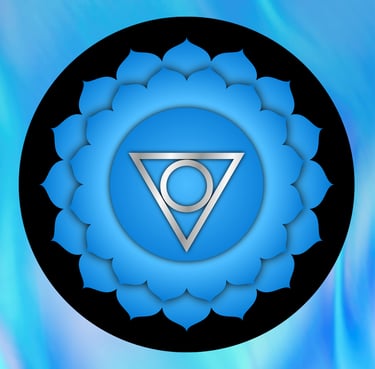

Function Disruptors
The throat chakra is often referred to as the “Seat of the Soul’ because it is through the heart chakra that we can connect to the higher realms. As a ‘space element’, there is the capacity to energetically, with intention, project our energy field to other realms for interdimensional travel, and become energetically aware, consciously of thoughts and ideas (telepathic communication), and the energy of emotions and feelings (clairempathy). When communicating with the higher realms or spirit realms, communication is activated for receiving guidance in the form of claircognizance (clear knowing).
The throat chakra, emotionally, is linked to the expression of feelings and emotions, as well as the capacity for creative and proactive expression. It is where we consider the thoughts and ideas and start to express them – especially when the expression involves feelings, and where there are choices inside, we can continue to express reactively to emotional triggers, or we can be creative and express in ways that create a desirable outcome that allows for a heightened connection to the people in the world around us. While the brow chakra is associated with ears and hearing, a well-functioning throat chakra enhances communication through astute listening and paying attention to nonverbal cues. Physically, it is associated with the detoxification of the body, the absorption of minerals and nutrients, and the preservation of the body's physical health and well-being.
The function of the throat chakra and its efficiency can be interrupted by our emotions, and many health conditions, such as mood disorders, affect both the sacral and the throat chakras (for example, depressive-type disorders). Fear is the primary blocker of the throat chakra. Genetic preconditions, such as autoimmune conditions, can also block the function of the Throat chakra. Other factors that can impact the throat chakra function are unhealthy or polluted foods, and air (and water).
Function:
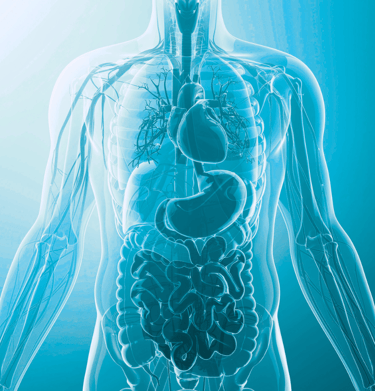

Assess Your Throat Chakra Function
You can assess the function of your Throat Chakra through observation and reflection. Chakra Dysfunction becomes apparent through the thoughts and emotions we hold and the way we respond to outside or external triggers (our behaviour). Below, you will find some pointers for assessing your chakra function and some reflective questions. You don't need to tell anyone your answers to the questions; however, it is essential when aiming to achieve your true potential to be completely honest with yourself.
Signs of a Healthy Throat Chakra
Emotional: Confidence, healthy relationships, peaceful, harmony, ability to express emotions, comfortable with self, accepts self and true self, awareness of self, transparent, empathetic, serene, calm, Harmonious, acceptance of comfort and discomfort, non-resistant, emotional intelligence and maturity, understands the links and connections between all.
Physical: Devoid of neck/throat ailments or impediments, good overall wellbeing, no chronic health conditions or autoimmune and metabolic dysfunction.
Behavioural: Comfortable in social settings and public speaking, exceptional communicator and able to resolve conflicts with ease, through peaceful and respectful communication, authentic and honest, negotiation and mediation, sincere, truthful, integrity, authentic, clarity of expression, healthy and balanced relationships including intimate relationships, inspired and creative, self-assured, confident, non judgemental, clarity of communication/speech, articulation of thoughts, opinions and beliefs.
Spiritual: Psychic Gifts, connection to Higher Realms, Higher Self, spirit Communication, Dream Messages, full range of clairs, and well-developed mediumship skills (spirit communication).


Signs of Dysfunctional or Blocked Throat Chakra
Emotions: feeling unheard or misunderstood, depression and mood disorders, feeling stagnant, unmotivated, and uninspired, lack of creativity, disharmony within relationships, feeling disconnected, isolated or alone, fear of judgement and criticism (and rejection), self-doubt, and anxiety, addiction.
Behavioural: Ineffective verbal and written expression. Difficulties communicating thoughts, emotions and needs clearly and confidently, yelling or speaking loudly, constant need for validation from others, lack of integrity (saying one thing and meaning another). Repetition of unhealthy cycles and refusal to learn from life experience, addiction and obsessive behaviours, codependency.
Physical: Thyroid and immune or metabolic problems, throat problems, sore throats and hoarseness, voice and speech problems (stutters and impediments), jaw tension, neckpain and frequent headaches, weight issues (over or underweight), fatigue, low vitality, swallowing and eating problems, such as loss of taste, some cancers, neck vertebrate problems, some mood disorders and explosive angry outbursts.
Spiritual: Undeveloped psychic gifts, inability to follow intuitive guidance, and limited access to some clairs (but not all) can reflect a barrier, as can a lack of conscious response to energy, such as telepathy.
Healing and Reflective Questions for the Throat Chakra
Do I struggle to express myself verbally?
Am I silent when I should be expressing, and yelling when I should be calmly stating my truth?
Do I become overwhelmed when speaking with people?
Do I feel unheard like no one listens to what I say?
Am I flexible with my truth to be accepted by others?
Do I remain silent to keep the peace?
Do I see a purpose and meaning in my life?
Do I chatter Incessantly?
Am I comfortable on my own?
Do I fill the quiet times in my life with noise to drown out my feelings and thoughts?
Do I listen to and act upon my intuitive hunches?
Do I express myself creatively? (Gardening, cooking, painting, writing, music, etc).
Do I feel isolated, disconnected and alone as I walk my path?
Do I hide my brilliance or 'tone it down' to avoid attention?
Do I have healthy relatonships with my mother/children?
Do I often believe other peoples untruths?
Do I jump to conclusions and take actions before investigating the truth of a situation?
Do I tell untruths?
Do I struggle to discern fact from fiction?


DO I FEEL SAFE STANDING IN MY TRUTH?


Bindu Chakra
Symbol: A 23-petal lotus, within which sits a crescent moon with a small circle. The small circle symbolises the nectar of life (or nectar of immortality), representing the manifestation of creativity and the power of consciousness (enlightenment). The Moon is the symbol of nurturing and nourishment, which provides the nectar that drips down to the Sun (sitting in the Navel chakra) for consumption and conversion to confidence, creativity and empowerment. For Tantra Masters and other Energy masters, who have activated the chakra, the nectar is depicted by a red dot. In summary, it symbolises the balance of life through the feminine and masculine energies of intuition and action that is divinely inspired and guided, which is reflective of the higher consciousness and a collective understanding and awareness of the connection of all, often referred to as the ‘brother and sisterhood’ of humanity.
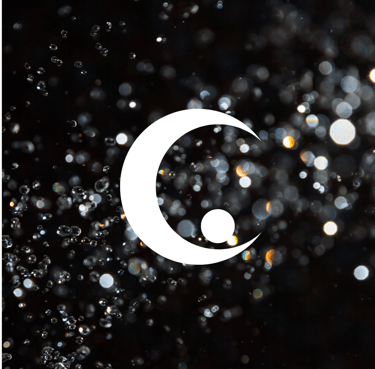

About
The Bindu Chakra is not mentioned in most Yoga books; however, it is vitally important to the Tantra masters and practitioners, because of its powers of healing and revitalisation. Spiritual Gateway to Spiritual Ascension and allows information from past lives for present healing, and energetically primarily flows between the crown, the brow and the Bindu – the brain, and contains the essence of emotional and spiritual knowledge. It is a chakra of enlightenment and expanded consciousness. A well-functioning Bindu supports youthfulness and helps reduce the physical signs of aging, overall health and wellbeing, with good mental health and vitality. A failure to open the chakra makes our physical body susceptible to illness and deteriorates with advancing age. It is considered a chakra of ‘Ascension’ where a person rises above the limitations of their physical existence, (thinking and living from the “Higher Mind’) and where their ‘Light Body’ (aura and chakras) speeds up at a molecular level to allow more of the “Light’ into their entire “BE-ing”. When the chakra remains dormant, the white dot remains a ‘dot’, but when it is active, it starts to ‘drip’ the nurturing energy (nectar) down the spinal column to the Navel chakra. Purportedly, Hindus believe the Bindu chakra to be the “sacred centre of the ‘cosmic energy’ or cosmos unmanifested”. Tibetan Buddhists believe the chakra sits in the subtle body (the aura layers around the physical body). Spiritual and Energy workers believe that the chakra is associated with connection to the Divine, as well as the Earth energy spirits and elementals and Mother Nature.
Purpose/Function: Youthfulness, vitality, good health and well-being, healing, calming, clarity, vision (physical and spiritual), Unification of the Higher/Lower Self aspects, enlightenment and Ascension.
Location: The Bindu chakra sits at the back of the head on the lower part of the skull, where it meets the spine. Sits below the crown chakra and above the throat chakra, and slightly beneath the brow chakra at the front of the head. It is in the space physiologically where the occiput and the parietal bones meet. If you place two fingers at the base of your skull and the top of your neck, you will feel the 'soft spot', and the chakra is located about two finger breadths on the skull above this soft spot.
Colour: Colourless (depicted as black, but in some instances it can be shown with a deep purple /violet colour) with a white crescent moon, and a white circle. When the chakra remains dormant, the circle is white - when active and activated, the circle becomes red (for the Tantra and Energy Masters).
Physical: Brain and Skull
Caution
Unification of the physical or lower self with the Higher Self aspect and the cosmos. Connect to past lives and selves – subconscious fears, pains, anxiety (over life times). Links and purifies thoughts and intention with the heart (love, kindness and compassion) and determines the actions we take as we walk the life path – in alignment with Divine Will. It is the chakra of 'pulling together' the fragments of the soul that may have become scattered over a series of lifetimes. For the current lifetime, it helps to regroup energetically. It lends itself to feelings of wholeness and completeness, along with alignment of energy centres, balance across mind, body and spirit, and fulfilment.
The ego is the primary disruptor of the Bindu chakra. Whether it is a case of not feeling good enough, or deserving enough to access the Divine, or feelings, questionable intent and motivations, a lack of humility will also act as a barrier to effective opening. Lack of balance in the sacral chakra blocks both creativity and acts as a barrier to growth because of the fears that are stored there. Feelings of distrust and unforgiveness act as blocks as well, as does a crisis of faith, thoughts and beliefs of limitation, and a blocked throat chakra will also interrupt the process of enlightenment.
While it is tempting to attempt to fast-track the opening and activation of this chakra, it is a process that occurs naturally as a person learns to balance the other chakras and their personal auric 'light'. It is not recommended to focus on the activation of this chakra, but rather to focus on the entirety of the aura and chakra system to allow it to become activated naturally and to enable a person to identify and discern between what is 'real and authentic' as opposed to illusion and self-deception. When a person fast-tracks this (and ignores the function of the other lower chakras), they may develop psychosis, or extreme mental illness, because of the inability to discern, and also make themselves vulnerable to other lower energies. A person must learn to keep their aura light and bright first. The Bindu and the Kundalini chakras work actively together. For explanation, Reiki Attunements include Kundalini Reiki - which a person generally has to be attuned to Reiki III (sometimes called "Reiki Master' or "Reiki Teacher") before being attuned to Kundalini Reiki and the activation of the Kundalini chakra. NOTE: You do not have to be a Reiki Teacher to activate these chakras; however, for the healthy function of these chakras, there will need to be an embedded and conscious understanding and awareness of energy to ensure health and well-being. The process of enlightenment and self-mastery occurs naturally at the 'Divine Time' - when a person is ready for the 'enlightenment' to occur. Enlightenment means many things, including that a person has surrendered to Divine will, released a desire to control other people and has let go of limiting and fearful thoughts and beliefs.
Function
Function Disruptors
Assess Your Bindu Chakra Function
You can assess the function of your BinduChakra through observation and reflection. Chakra Dysfunction becomes apparent through the thoughts and emotions we hold and the way we respond to outside or external triggers (our behaviour). Below, you will find some pointers for assessing your chakra function and some reflective questions. You don't need to tell anyone your answers to the questions; however, it is essential when aiming to achieve your true potential to be completely honest with yourself.
Signs of a Balanced and Healthy Bindu Chakra
Emotional: Calm and peaceful, balanced, happiness and joyfulness, liberated, clarity, relief from anxiety and depressive type conditions, hopeful, optimistic and capable of creating change, inner strength and courage, heightened awareness of life and self.
Physical: Overall good health, youthfulness, high vitality, improved eyesight,
Spiritual: Access to Psychic Gifts; aura and chakra stability, manifestation and creativity, connection to Divine Love and Universal Pool of knowledge, access to the Akashic Records, Access to Universal Wisdom, Unification of the Higher Self aspect with the lower self aspect, surrendered to Divine Will.
Behavioural: Mentally balanced and stable; Enthusiasm for life, Good self-control and impulse control, Healthy diet and lifestyle, (able to overcome hunger and thirst, and unhealthy eating styles), living authentically and true to self.
Signs of a Dysfunctional Bindu Chakra
Emotionally: Lacking compassion, indecisiveness and overwhelmed by thoughts, low or blocked creativity, overactive ego, inability to feel and experience happiness and joy.
Physically: Dizziness and Headaches, or age-associated conditions such as dementia and alzheimers, deterioration of the physical body.
Behavioural: Hyperactivity, low impulse control, addictive behaviours, poor diet and eating habits, imbalanced life/work, self-absorption, overactive ego (acting with superiority), living inauthentically, and feeling that life is meaningless or purposeless. Repeated patterns of dysfunction and unhealthy lifestyles, overwhelmed by emotions, unable to think clearly, or make decisions,
Spiritually: Past life recall and healing, spirit regroup, manifestation, self-awareness, universal awareness, live to divine potential.
Healing and Reflective Questions for the Bindu Chakra
Do I feel isolated, alone and unsupported by the universe and life?
Do I find myself continuously making the same mistakes?
Are my body and mind showing the signs of aging and age-associated health conditions?
Are my thoughts scattered despite my faith?
Am I feeling disempowered and overextended with life responsibilities?
Do joy and feelings of love escape me?
Do I feel that I can live authentically and that life allows me to live to my potential?
Do I feel connected to the Universe, and the Divine?

Brow/ Third Eye Chakra
Symbol: A two-petalled lotus flower, within which a circle sits, and within the circle, there is an inverted triangle containing the seed mantra for OM. The downward pointing triangle represents the union of the divine with the individual (person), in the form of intuition and the manifestation of wisdom – the connection of the intellect (mind) with spirit. The two petals represent the energy channels and the duality of consciousness and unconsciousness, which merge at the Brow chakra. The circle symbolises infinite awareness and a unified consciousness. The OM is the sound of the universe through which we call upon the Creator/Source.
About
The Brow Chakra is the sixth of the seven major chakras, referred to as the “Third eye’. It is part of the pranic system of energy, associated with the element of light. Light represents clarity and wisdom. People of the Hindu faith call it “Ajna”, which translates to ‘command. It is associated with vision and visualisation, the ability to see the nonphysical, and to connect a person to their intuitive and psychic gifts. Its other purpose is related to creativity, through the development of the imagination and visualisation. It is a vital communication centre for connecting with the world, spirit and the people around us. Metaphysical workers, such as Psychics, mediums, and Healers, have been able to activate the brow chakra for the purpose of receiving and giving divine messages. It is the link between the subconscious or unconscious mind and the ultimate reality (the Higher Self aspects and sacred wisdom, as well as the earthly life path). Often associated with the gifts of clairaudio and the visual elements, the Brow Chakra is also related to the power of the mind and intellect.
Purpose/Function: Healing, Psychic Senses (Clairs), Abundance, Intuition, Physical Senses
Location: Centre of the forehead between the eyebrows. Although not part of the physical body, it is considered a sacred location by Hindus and Buddhists. Hindu worshippers typically place a tilak bindi over the brow chakra. In some Asian cultures, such as Bali, worshippers working in public places place rice grains over it to ‘close it’ while working.
Colour: The colour of the brow chakra is indigo – a shade of purple/blue that symbolises inner knowledge, spiritual awareness, and intuition. Often the colour associated with “psychics’ or psychic ability. In some instances, it is associated with royalty and with high-ranking church officials symbolising wisdom and connection to God/Creator.
Physical: Eyes, ears, mouth, nose, face, jaw, teeth, frontal lobe, rational processing, neuropathy, physiological sensitivity
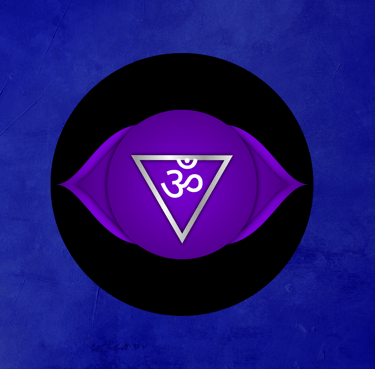

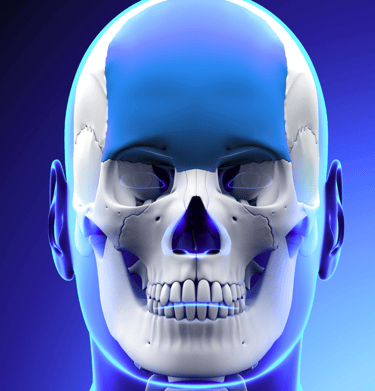

Function
The brow chakra oversees the way we perceive the events and people around us (and ourselves). When we refer to a person as being narrow-minded or “unable to see all the perspectives within a conflict”, this is indicative of the third eye being narrow, tunnel-like, or closed. Vision and visualisation are more than looking at a specific image or situation. A well-developed brow chakra allows a person to see spirit and communicate with them (usually via dreams and symbolism), or through the psychic gifts of clairaudio (music and songs), sometimes the sense of smell or taste. The heightened perspective is also multi-layered, referring not only to how we process the information we receive but also to the visual aspect. Those gifted in doing the auric scan can look at a person’s aura from above (and see any energetic influences around the person, and what might be ‘above them’. They can also visualise what might be beneath the person (such as if the person is ungrounded and has an unstable energy field. Other functions include telepathic telecommunication (and even astral projection and astral travel). The tasks of telepathy and telepathic communication are all set through intention, which is potentially where the translation of ‘command’ comes into the description of the brow chakra. Remote viewing is another activity by well-developed or open brow chakras, which is a person’s capacity to see things in faraway countries.
Function Disruptors
Emotional dysregulation, fear, neuropathy, substance abuse and addiction, maladaptive cognition and thinking styles, Sorrow, grief and sadness, resistance to change, Frontal lobe damage, acquired brain injury, Trauma and betrayal, crisis of faith, judgment, dysfunction of the lower chakras, especially heart and throat.
Caution
The brow chakra functions tend to create interest from people who tend to romanticise the gifts and desire to fast-track access to them. Unfortunately, the desire to fast-track access is usually bout a person’s desire to see and know the challenges that they are to face or to understand emotionally what others might ‘feel’ or ‘think about them. It’s a desire steeped in fear, and whether they are aware or not, a desire to either control themselves, their reactions, their environment, or the people around them, especially family members and intimate partners. To put it bluntly, the desire to fast-track access to the gifts is of questionable intention and usually self-serving. To activate the psychic gifts reliably is one that can’t be pushed or forced but rather a natural progression as the person works through their fears, insecurities, vulnerabilities, capacity to love and forgive both themselves and the people around them and to release judgement about people and their situations to ensure that any imagery or visualisation is unadulterated by personal views (which becomes a transfer and projection of any ‘issues’). It must also be mentioned that energy is magnetic with ‘like attracts like’ so if a person is full of fears and insecurities they will draw to themselves energetic experiences that reinforce fears and compound any feelings of a lack of safety, including Paranoia, which is why people with mental health conditions should seek to stabilise their health and heal those conditions before trying actively to open the brow chakra. This will ensure that they can discern between the messages of spirit and the Divine, as opposed to any mind chatter (both negative or positive), which can lead to delusions and symptoms of any schizoaffective disorders.
Assess Your Brow Chakra Function
You can assess the function of your Brow Chakra through observation and reflection. Chakra Dysfunction becomes apparent through the thoughts and emotions we hold and the way we respond to outside or external triggers (our behaviour). Below, you will find some pointers for assessing your chakra function and some reflective questions. You don't need to tell anyone your answers to the questions; however, it is essential when aiming to achieve your true potential to be completely honest with yourself.
Signs of a Healthy Brow Chakra
Emotional: Self aware and aware of others, able to see situations from multiple perspectives, doesn’t take things personally, Reflective, emotionally balanced, heightened emotional intelligence, with capacity to regulate emotions.
Physical: Balanced Eyesight, balanced hearing, healthy sense of smell and taste, good oral health,
Behavioural: Balanced and open minded, compassionate, Intuitive, rational, creative, ability to concentrate and focus, expanded perspective (lateral thinking/viewing), dream interpretation, symbolism (understanding), insightful, willingness to see what is directly in front of a person for the truth of what the situation is, and capacity to think and visualise long term. Capable manifestation, and ability to see the long-term vision/goal upon completion, responsive to hunches and gut instinct (intuition),
Spiritual: Clairvoyance, clairsentience, clairaudience, telepathic communication, energy channelling (focus and direction), birds-eye perspective, remote viewing, dreaming, clarity of purpose and decision making, see life purpose, manifestation (visualising goals), openness to seeing the expanded perspective, remote viewing, astral projection,
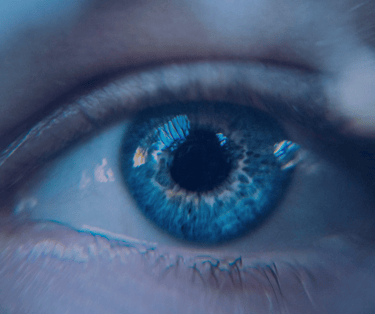

Signs of a Dysfunctional Brow Chakra
Emotional: Indecision, inability to focus or concentrate, anxiety and mood disorders, Paranoia, anxiety conditions, delusional, easily emotionally overwhelmed,
Physical: Brain and perceptual problems, vision, longsightedness, short sightedness, sensory barriers (such as smell, taste and touch), hormonal and immune problems, headaches and migraines, sinus infections, adenoids, hearing problems, inner ear problems, sleep disturbances such as insomnia,
Behavioural: Reactivity, personalisation of comments and criticisms, lineal and narrow perspectives, substance abuse and misuse (including prescriptive), delusional, psychotic, and schizoaffective disorders, ungrounded, erratic, unstable, ‘off with the fairies’, inability to meditate, rumination (PTSD),
Spiritual: Inability to feel energy, delusions, psychosis, poor discernment between fact and fiction, hallucinations, negative mind scripts, believing negative speak (mind chatter) is ‘guidance’, manifestation blocks, inability to hold a ‘vision’, low creative visualisation, random ‘clairvoyant visions’, purposeless imagery.
Healing and Reflective Questions for the Brow Chakra
Do I struggle to retain focus on my goals and apply myself to them?
Do I struggle with visualisation and using my imagination?
Am I able to concentrate for long periods of time.
Am I aware of anything within me that prevents me from aligning with Spirit/Divine the eternal?
Am I able to see causes within me of ill health such as inadequate diet and exercise regimes?
Am I often experiencing feelings of betrayal because I extend my trust to people who are unworthy of it?
Am i able to create and retain healthy relationship boundaries?
Am I learning lessons from past experiences?
Do I suffer from conditions such as Anxiety/Depression/PTSD or Mood Dysregulation?


DO I FEEL SAFE SEEING THE TRUTH?


Crown Chakra
Symbol: The symbol of the crown chakra is a thousand-petal lotus flower. In the centre of the flower is a circle which represents pure consciousness (and the ongoing cycle of life – eternal). Sometimes within he circle there is a triangle. The petals represent the infinite, spiritual enlightenment, and unlimited awareness (access to the Divine Source of All). The circle is also a representation of unity, wholeness, and the interconnectedness of all of us – physical and non-physical beings. The centre of the symbol is usually left clear to represent the void or what some call the ‘ultimate realisation of the soul’, and sometimes the symbol of the OHM is placed within the inner triangle; however, there is no sound seed for the crown chakra.
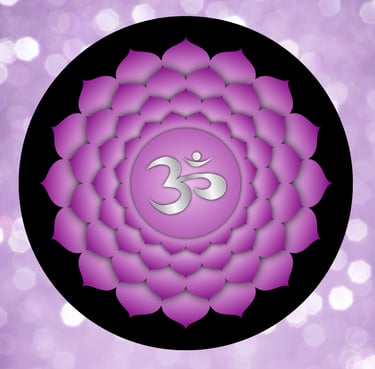

About:
The crown chakra, or Sahasrara, is the seventh and final energy centre in the physical body (there are other chakras higher than the crown, but they are outside of the physical body). It is associated with the element of consciousness and the highest levels of spiritual awareness – and is considered a gateway to connecting to the Divine or Universal consciousness. It typically promotes concentration for deeper states of consciousness through the state of meditation and activates inner peace. It is considered a chakra of enlightenment.
Purpose/Function: Thoughts, learning, knowledge, connection, enlightenment, Unification, memory, Transcendence, Transformation
Location: Top of head/Crown to base of crown where skull meets neck.
Colour: Violet or White (often appears to be a pale violet or lilac colour).
Physical: Brain, Skull, Forehead, Neural pathways, frontal lobe (processing), concentration, memory, focus, sensory perception, emotions/feelings (pain, hunger, fight /flight/fright reactions), judgement, planning, orgranisation, creativity, inhibition, extrovertism, language, motor function (eye movement, limbs, assessment, discernment), coordination, balance, posture, pineal gland, Production of hormones including seratonin and melatonin.
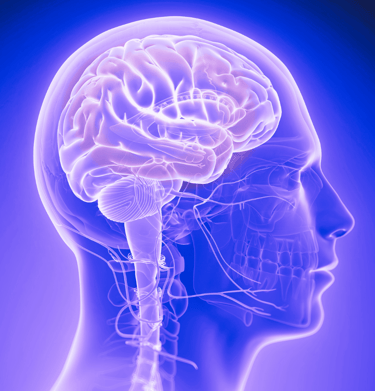

Function
Brain Injuries (falls/knocks), chemicals, substance abuse /Drugs, Aging, Dysfunction in the lower chakras, Childhood (teaching), genetics, Trauma experiences can be stored in the Crown chakra leading to crisis of belief in disconnection and isolation.
Function Disruptors
An open and balanced crown chakra can bring profound benefits across all aspects of our physical existence, as well as spiritual abilities. It fosters a sense of connection both with spirit, universal knowledge and awareness, and the recognition that at a core level we are all connected. It assists a person to transcend the material world of limitations due to beliefs and thoughts. It is associated with a ‘spiritual awakening’ and concepts of ‘enlightenment’. It promotes learning, expansion of knowledge and wisdom, in the form of universal understanding and awareness, self-awareness, and the gaining of both metaphysical and earthly skills. Spiritually, it supports surrendering to the Divine Will, recognition of free choice, and embracing the Divine Plan and recognition that we are all part of a larger phenomenon, with a larger purpose that benefits the ‘all’, and our lives feel meaningful and purposeful. It is associated with the release of desire to control, and surrendering to the ‘Higher Power’, and walking into our ‘personal power’ in alignment with Divine Will. The enlightened person understands the connection between all and feels supported by the Universe and Divine as they walk the path. Even if they walk the path physically alone, there is an awareness and faith in the celestial and spirit beings that support them across their physical life path. The mind is connected energetically to the heart and all their actions, speech and behaviour are divinely inspired, and underpinned by love, care, kindness and gratitude.
Assess Your Crown Chakra Function
You can assess the function of your Crown Chakra through observation and reflection. Chakra Dysfunction becomes apparent through the thoughts and emotions we hold and the way we respond to outside or external triggers (our behaviour). Below, you will find some pointers for assessing your chakra function and some reflective questions. You don't need to tell anyone your answers to the questions; however, it is essential when aiming to achieve your true potential to be completely honest with yourself.
Signs of a Healthy Crown Chakra
Emotional: Clarity of thought, feelings of fulfilment, inner peace, heightened awareness and understanding, empathy and compassion, healthy boundaries, self-awareness, emotional intelligence, and responsibility. Emotionally and psychologically balanced and able to regulate emotions, and able to process and rationalise emotions
Physical: Energetic, with good life force/vitality, a Healthy endocrine system and hormone balance, and overall good general health.
Behavioural: acceptance of emotions and non-resistance especially to change, willingness to ‘go with the flow’, surrender to the higher powers, discerning but not judgemental, lives purposefully and finds life meaningful, able to direct uncomfortable emotions to healthy outcomes and outlets, takes responsibility for feelings (no blaming), healthy sleep patterns, positive thinking,
Spiritual: Enhanced intuition and responsiveness to intuitive guidance, ability to recognise the divine flow, awakening, dreams and dreaming, understanding of symbolism, capacity to discern spiritual guidance and messages, ability to channel energy, manifestation of the divine idea, purity of intention, and capacity to channel information, messages and energy clearly.
Signs of an Imbalanced or Dysfunctional Crown Chakra
Emotional: Depression, purposeless, confused, loneliness, abandoned, isolated and rejected, overwhelmed by negative mind chatter, flawed perception, victim mentality, paranoia, self-absorption, apathy, depression, narrow-minded, and judgmental of self and others, cynicism and excessive scepticism, psychosis, self-righteousness,
Physical: Migraines and Headaches, Sensitivity to light and sound, insomnia, fatigue, inability to focus and concentrate, poor memory recall, some skeletal problems and bone disorders, Alzheimer’s and dementia type conditions, rashes and skin conditions, such as acne or psoriasis, disturbed or dysfunctional circadian rhythm, poor heart health and blood circulation problems.
Behavioural: Learning difficulties, repeated negative patterns, inability to follow directions, rigid thinking (especially ideas of correct/wrong), judgmental of people, self and situations, insomnia and sleep disorders, Attention Deficit disorders, Psychosis and Dissociative disorders, lack of grounding, purposelessness, narrow-mindedness, or close-mindedness. Know it all (inability to learn new information), Dissociative Disorders, Confused, disoriented, disorganised, and indecisiveness, over thinking, or low impulse control, dependency on material items, addictions, neurodiverse conditions and intellectual problems, including processing and understanding thoughts, beliefs and emotions, intolerant of other peoples belief systems (including religion and spiritual practices), overanalytical or overthinking. Over intellectualisation, difficulty meditating and ‘turning the brain off’, susceptibility to sleep disorders and insomnia, selfishness and delusions of grandeur, and superiority, narcissistic and other personality disorders,
Spiritual: Feeling disconnected from spirit/guides, lack of faith, ungrounded, off with the fairies, tendency to daydream and ignore what is happening in the present environment, difficulty meditating, feeling ungrounded, spiritual disillusionment, feeling unworthy of Divine love.
Healing and Reflective Questions for the Crown Chakra
Am I controlling? or resistant to control?
Do I attempt to manipulate people to do things that I want them to and if they refuse, do I get angry and potentially use force?
Am I violent with myself and others?
Am I assertive, or am I too frightened to assert because I fear a violent reaction (or negative judgement of others?)
Am I idle or inactive? Do I procrastinate?
Have I ever been accused of being arrogant or domineering?
Do I struggle to feel emotions? Do I repress my emotions?
Am I frightened by my feelings?
Do I hurt myself to feel emotions or release them?
Am I awkward around other people and uncomfortable with personal demonstrations of affection such as hugs?
Do I feel locked into negative and unhealthy situations and relationships?
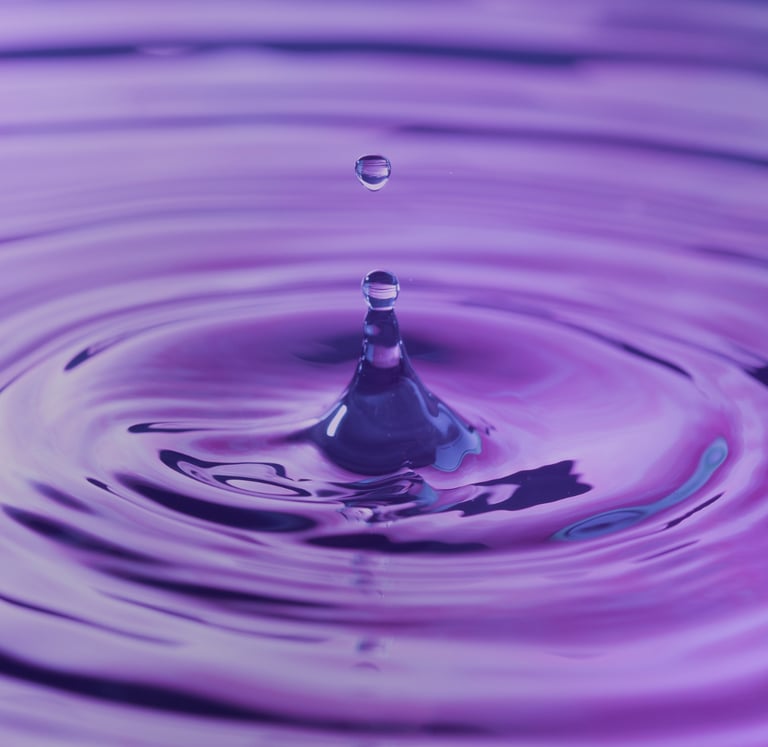

DO I FEEL FREE OR TRAPPED BY CIRCUMSTANCES?

Rainbow Chakra
Symbol: The Rainbow chakra does not have a symbol. Instead, it is often depicted in images as a rainbow, or shades of the rainbow, and sometimes with feathers and angel wings. Clairvoyants describe it as a “Halo” that sits above the head, as depicted in images of the Christian Jesus, Saints, and the Virgin Mary, with the colour gold.
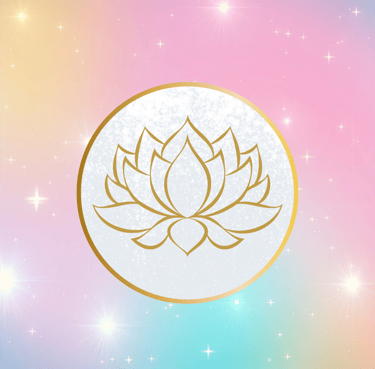

About:
The Rainbow Chakra (also known as the 'Soul Star Chakra' or Celestial Chakra'), is a chakra of transcendence, through which a person connects to their 'Higher Self" aspect and for channelling divine information, such as Divine Purpose for the earthly life time, the Divine Plan and the "wisdom of the soul". Some people believe that the Rainbow chakra acts as a gateway to 'Cosmic Consciousness", all that exists and spiritual wisdom – of love and compassion. The Rainbow chakra is the point of merging of the individual self with the "All That IS' or "ALL that I AM", and is the place of fusion of the higher self aspect, the lower self aspect, which is experienced when we are born on the earthly plane into a human body. On the Earth plane, we have a 'duality' and inner conflict that leaves us feeling isolated and separate, until we merge the higher and lower self aspects through the Rainbow Chakra. Through accessing the rainbow chakra, we recognise and experience the "ONENESS' of universal consciousness. The Rainbow Chakra represents the union of our earthly self (mind, body, and spirit) with our authentic self (the Higher Self), which is unencumbered by the challenges of living life. It is considered the Divine spark, which knows the purpose of both the life on earth and the eternal self aspect over multiple earthly lives.
Purpose/Function: Unification, Alignment, Connection (to Higher Realms and Light Beings), Connection to Source, Divinity, Universal Knowledge, Divine Plan, Brother /Sisterhood Consciousness, Higher Consciousness, Enlightenment, Surrender to Higher Will/Power..
Location: Above the top of your crown – if you were to extend your arm upwards, it commences about the tip of your fingers. It is located at the uppermost part of your egg-shaped aura, above your physical body but still within your aura, serving as a gateway to universal energy and consciousness.
Colour: Pearlescent – white with the colours of the rainbow swirling within. Carries all the shades of the colour spectrum red, orange, yellow, green, blue, indigo, and violet.
Physical: The Rainbow chakra is associated with the entire aura and chakra, and therefore the whole of the physical body. It would be a mistake to think that a person with an active and open rainbow chakra - connected to both guides and guardians and an ability to access divine healing energy experiences complete and total physical health and wellbeing, for the simple reason that it may have been part of their divine plan to experience ap hysical illness (or challenge), and this includes experiencing genetic or intellectual problems. For others, it may be to experience the health problem but to work through it and find new and unique ways to access the energy of the divine, feeling both unified and connected to Spirit despite physical and health limitations.
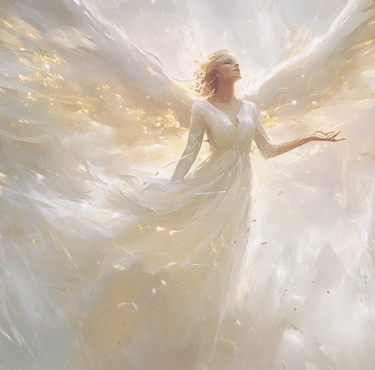

Function
Connects to the Universal pool of Knowledge, the Divine I AM aspect, the Higher Self Aspect, access to information about past lives and the divine plan for current life. When the chakra is activated, people will desire to act and behave from their 'authentic self', where truthfulness and honesty are vital. It is also associated with an absence of judgment about other people and where they are on their own 'path'. There is an innate respect for others, that we are all walking our own path, and at different stages of the 'journey', and that we are all individual aspects of a larger body that incorporates all – the Source, Creator, the Divine, the Universal Pool, the interconnection between all and the brother and sister consciousness, as well as a care and regard for the Universe, plants, animals, human, and other. The primary function of the Rainbow chakra is to provide clarity on the earthly purpose for this incarnation, to pursue the divine plan, and to navigate earthly challenges in wise and healthy ways – so that we can live a meaningful life with relative ease.
Function Disruptors
Low self-esteem, beliefs in limitations, upbringing (specific religious teachings), closed mind, fear and trauma, crisis of faith.
Assess Your Rainbow Chakra Function
You can assess the function of your Rainbow Chakra through observation and reflection. Chakra Dysfunction becomes apparent through the thoughts and emotions we hold and the way we respond to outside or external triggers (our behaviour). Below, you will find some pointers for assessing your chakra function and some reflective questions. You don't need to tell anyone your answers to the questions; however, it is essential when aiming to achieve your true potential to be completely honest with yourself.
Signs of a Healthy Rainbow Chakra
When the rainbow chakra is open, activated and balanced, a person will have highly developed and reasonably reliable intuition. There is no desire to control other people, but rather a quiet acceptance of life and people within their current state and a recognition that we are all on a journey. There is an inner peacefulness and quiet acceptance that this life is temporary, a gift and a blessing. To make the most of life, we must live well and make a positive difference to the world, knowing that everything occurs in the divine way, at the divine time, in the divine place. Life carries a higher meaning and purpose; we are all interconnected, and we choose to align with divine will. Unconditional love and acceptance underpin our motives. When the rainbow chakra is open and active, a person experiences a sense of wholeness, completion, and inner peace and takes responsibility for their emotional, physical, psychological, and spiritual wellbeing.
Signs of a Dysfunctional Rainbow Chakra
When the chakra is open and a person does not have their energy centred and anchored to the earth energy, they can feel ungrounded and dissociated from earthly concerns. Others might perceive them as 'spacey' and off with the fairies, lacking in purpose, changeable, daydreaming, directionless, and unable to make decisions. Other signs of dysfunction and imbalance are where a person becomes obsessive in their daily activity, focused on 'spirituality' and 'enlightenment', not realising that their ego is pushing them to be 'better than everyone else'. Physically, a person can experience headaches, vertigo and other signs of imbalance. Other signs of an imbalance can include an inability to state intention or to have a purpose, and they remain emotionally unfulfilled and constantly craving and yearning for something 'more' or better than what they currently have. They may feel sluggish or stagnant and suffer from conditions such as anxiety and depression, with a lack of faith and trust in themselves and other people, and be cynical about life and spiritual concepts such as guides and guardians.
Healing and Reflective Questions for the Rainbow Chakra
Do I feel connected to my Guides/Guardians?
Am I alert to my intuitive guidance?
Am I alert to my gifts including Psychic gifts?
Am I aware of my Divine Plan and my role in the Universe?
Am I resistant to change, or adapt with ease?
Have I surrendered to Divine Will?
Do I feel energetically and spiritually safe?
Do I carry faith, and trust in the Higher Powers and the Process of life?
Do I feel empowered and able to call upon the Higher Powers for healing?
Do I believe in the power of Prayer and Invocation?


DO I FEEL BLESSED AND GRATEFUL FOR UNIVERSAL SUPPORT?

Earth Star Chakra
Symbol: A circle representing the ongoing cycle of life and infinite consciousness, containing a star tetrahedron. The upward-pointing triangle is symbolic of the masculine energy. It is associated with fire, activity and the power of the mind. In contrast, the downward pointing triangle symbolises the feminine energy of the “Mother Earth”, Intuition, and ancient wisdom, stability and the material world. The inner centre represents the ‘holy Trinity” of mind, body and spirit. Other images to depict and symbolise the Earth Star Chakra include the Geometical symbol known as "Metatron's Cube' which is the foundational maths of sacred geometry.
About:
The Earth star chakra is the anchor of our entire energy system (aura or ‘light body) to the earth plane. In Sanskrit, the earth star chakra is called the Vasundhara, which in English translates to “Daughter of the Earth”. Energy is defined as masculine or feminine with the founding concepts that masculine energy is protective, logical, and active, or passionate, where feminine energy is protective in a maternal way, laterally thinking (creative) and calming and soothing. The Earth is associated with the calming and nurturing qualities of “Mother Earth. In contrast, the Heavens (sky, wind, and clouds) are associated with the mind, and paternal or masculine qualities of protection and providence. Too much of either can result in imbalances within our energy fields. For ease of understanding, unless we ‘anchor’ our energy onto the earth plane, we might find that we are always full of good ideas and well-meaning intentions; however, these ideas remain unmanifest because we are ungrounded. Others might perceive us to be ‘all talk and no action’. While the base chakra is associated with grounding, the earth star is an anchor that ensures our overall stability – emotionally, psychologically and spiritually.
Purpose/Function: Anchor your entire energy system, grounding, aura purification, connection to Mother Earth, the environment and humanity.
Location: Within your etheric field but outside your physical body, about a foot beneath the soles of your feet, at the base of your aura.
Colour: A rich and deep earthy brown, with hues of maroon.
Physical: Skeletal Structure, feet, ankles, legs and hips.
Function
Failure to create space to centre and ground, overthinking, mood/emotional disturbances, trauma, and traumatic experiences, Pollutants, diet and poor work/life balance.
Function Disruptors
To connect to the energy of the earth (Mother Earth and the Nature Kingdom) and support a rational (and yet spiritual) approach to your material existence, and a balanced approach to decision making. Through tapping into the earth energy, a person can access the wisdom of the earth and ancients, learn from the past, and incorporate daily activities to a higher consciousness and experience stronger connection, care and love for and from the people in their surroundings, (greater social and relationship connection) as well as taking a greater personal responsibility for the health of the planet through caring for the environment as part of the higher consciousness and care for humanity. Other functions of the Earth Star include anchoring the healing rays of high vibration, especially the Aquamarine Ray. You can read more about the Healing Rays on the Power of Colour Page. When working with the Earth Star, activities for purifying the aura and chakras are enhanced as the process helps to release any toxic or stagnant energy into the earth, where it becomes purified.
Assess Your Earth Star Chakra Function
You can assess the function of your Earth Star Chakra through observation and reflection. Chakra Dysfunction becomes apparent through the thoughts and emotions we hold and the way we respond to outside or external triggers (our behaviour). Below, you will find some pointers for assessing your chakra function and some reflective questions. You don't need to tell anyone your answers to the questions; however, it is essential when aiming to achieve your true potential to be completely honest with yourself.
Signs of a Healthy Earth Star Chakra
Emotional: Stability, feeling connected to others, healthy relationships, happy and feeling blessed, emotionally intelligent and responsible, takes responsibility for own emotional responses, healthy thinking styles (positivity), ability to ‘go with the flow’ of life, feelings of safety and peace.
Physical: Stability and mobility, physical balance, and coordination,
Behavioural: ease of relationships, broad perspective – and empathy toward nature and the animal kingdom, concerned about environmental matters such as pollution and recycling, grateful for the physical life, brother/sisterhood consciousness – seeing interconnection of all things including animals, plants, and the cycle of life, socially connected with positive relationships and ability to discern what is healthy and /or unhealthy for yourself.
Spiritual: Balanced within aura and chakra systems. Connected to Earth (Mother nature and elementals), centred energetically, and living authentically, energy awareness with increased energy flow and capacity to channel energy, willingness to grow spiritually and energetically, and absorb the ‘greater lessons’ and experiences, access to ancestral wisdom and wisdom of the ancients, feelings of gratitude and blessings, connection and Attunement to earth settings and environment.
Signs of an Imbalanced or Dysfunctional Earth Star Chakra
Emotionally: Disconnected from other people, out of touch with surroundings, mentally drained and exhausted, feeling depleted of positive emotions, feeling ungrounded and emotionally unstable, mood swings, overthinking, mentally overwhelmed, dissociative conditions, psychosis, phobias, feeling stagnant, anxiousness, dissociative mental health conditions, difficulty trusting people.
Physically: low vitality, exhaustion and fatigue, problems with physical detoxification and waste elimination organs, low liver and organ health function, problems with feet, ankles, legs and hips, lightheadedness, vertigo,
Behavioural: Disregard for the environment and world in which we live, inability to experience gratitude, failure to see blessings within troubles and life challenges, dissociative and avoidant behaviours, social isolation and exclusion, lack of connection to other people and difficulty creating and maintaining relationships, poor relationship boundaries,
Spiritual: Feeling ungrounded, and unable to embed spiritual principles in current existence and the material world, vulnerable to energy transfers, especially toxic energy or “psychic attack”, ‘off with the fairies’,
Healing and Reflective Questions for the Earth Star Chakra
Do I feel that I can cope with the challenges of my daily life?
Do I learn from past mistakes and embed the lessons into my present?
Do i find myself lost in rumination over the past, or anxious about my future?
Do I have healthy relationshipos with others?
Do I act responsibly toward the earth and its resources?
Do I feel isolated, alone and unsupported or connected to supportive family and friends?
Am I able to see the blessings in challenges, and the silver lining in clouds?
Am I able to regenerate my depleted energy with ease?
DO I FEEL UNGROUNDED, CONFUSED AND ALONE?

Kundalini Chakra
Symbol: The Caduceus (depicted as two winged snakes coiling around a rod), surrounded by the burned-orange, earthy coloured flames of the Kundalini energy/life force. The winged Caduceus in this image is also known as the “Rod of Hermes”. It symbolises the unification of the two aspects of self: Higher Self and Lower Self. It reflects internal balance and peace, neutrality (release of judgment), enhanced communication, travel, and protection, as well as spirit communication (souls that have transitioned from the earthly plane to the spiritual plane). The Caduceus is also associated with activities such as astral travel, communication with celestial kingdoms and the elementals of the Earth Kingdom (Mother Nature). From a health perspective, the symbol reflects improved vitality and life force.
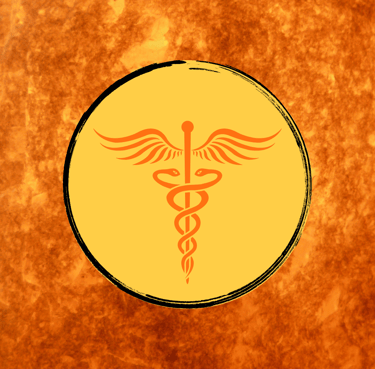

About:
Kundalini is a dormant energy within the chakra system in the Kundalini Chakra until it is activated. It is associated with life force and vitality. Once activated, the dormant kundalini coils up and down the spine in two channels. The activation of the Kundalini chakra is referred to as an “Awakening” to your energetic power and gifts, promoting the ‘spiritual journey’, bringing profound spiritual benefits, such as communication with Higher powers, conscious and controlled direction of energy, receptivity of healing energy and communication, as well as emotional, psychological healing, and capacity to deliver heightened healing experience to others. While activating the kundalini chakra is enticing, the reality is that it comes with its own set of challenges – and opening and activating the kundalini chakra can, in fact, create problems for people in their physical existence – especially if the Kundalini chakra is forced open (see the chakra caution). Forcing the Kundalini chakra open is unnecessary because, as a person focusesfocuses on raising their personal light vibration and maintaining balance in their life (work, rest, recreation, family, and so forth), the Kundalini chakra will invariably open of its own accord – at the divine time and in the divine way. A natural awakening involves a series of challenges on the spiritual journey, and earthly life path where a person overcomes physical and mental challenges before the kundalini is activated. For some people, it might not be a conscious activation either.
While the Kundalini chakra is not necessarily recognised by most people as far as chakras go,, it is actually the chakra that Tantra masters and yogis focus on for spiritual awakening as part of heightening their capacity to receive divine messages. It is believed that by harnessing Kundalini energy and holding that energy, and releasing it in a controlled way, all the other chakras along the spine are ‘blown open’ through a whole body ‘orgasm’ that allows for divine messages and inspiration to be transmitted to the crown of the practitioner. While from a Western perspective many people attempt the practice for sexual gratification, the Tantra Masters are motivated by a spiritual growth and enlightenment perspective.
Symbolism Backstory
In modern times, we recognise the Caduceus as the two-winged snakes of the "Rod of Hermes"; however, the symbol dates back to the times of Mesopotamia and the Sumerians, where the snakes are coiling around a staff (or rod). The Caduceus was considered in ancient times to represent the god Ningishzida, who was not only a god of abundance and fertility but also a god to some extent of the underworld (the dead) and where he spent a good part of each year with the dead, acting as a 'door keeper' or gate keeper to Mother Earth. Other attributes associated with Ningishzida (and the Caduceus) include socialising and connection to others, justice and fairness, warrior (fight for right), and business acumen. Ningishzida was not a healer himself – he dedicated a temple to the goddess of healing, Ninisina, who a dog and a scalpel symbolise. Ninisina was known as a Divine Healer and Physician in her time, and is said to have been an unmarried mother who held 'court' with females only. Other symbolic associations for the winged Caduceus include the goddess Ishtar, who is also associated with fertility, the Divine Mother and Medicine and healing. In its original form, the Caduceus is more about farming, the cycle of life, seasons, death, birth and renewal. When it has wings, it's a reference to the balance of life – the connection between Mother Earth and Father Sky, or the celestial realms.
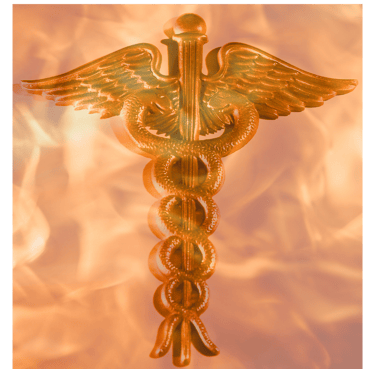

Location: The chakra sits at the base of the spine, and if you were to run your fingers to the crack between your butt cheeks, its just above your anus
Colour: It is associated with a shade of orange that is less orange and more amber. It draws upon the colour healing rays of the red (base chakra), and the more vibrant orange of the sacral chakra. Orange is a colour mix of the yellow and red, so it carries some of the yellow hues as well, giving it a rustic or even terracotta colouring.
Physical: Coccyx (tailbone), reproductive organs and waste removal organs (when dormant), skeletal health and structure, blood flow and distribution, breath, breathing and oxygenation
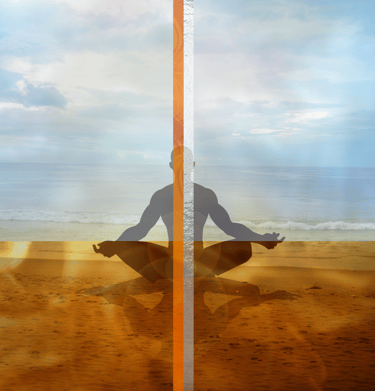

Function
Unresolved fear, beliefs (religious), teaching, life experiences of betrayal or violence, lovelessness, emotional disturbance, mind altering substances, escapism (eg meditating for hours each day which is also an 'avoidance' of the life experience and divine Purpose in most instances), lack of self regulation and impulse control (emotional reactivity based on fear).
Function Disruptors
Spiritual growth and enlightenment, through the clearing of old beliefs and any blockages in the chakra system (and activation of all the chakras if they are inactive). The Kundalini Chakra's primary function is to unite the Higher Self and Lower Self aspects, promoting practical wisdom and living with integrity. Spiritual growth encompasses the awareness of brotherhood and sisterhood, as well as connection to the Wisdom of the Earth and the Celestial realms. Enhanced communication – and capacity to experience greater vitality (life force), passion and enthusiasm for life, along with a deepened understanding of the Universal Laws and Order, and enhanced perspective of one's place and purpose. The Kundalini Chakra opening is referred to as "a Kundalini Awakening", where the dormant Kundalini energy activates and commences to travel along the spine.
Caution
Kundalini energy is powerful, and forcing the chakra open before a person is ready can be extremely painful. It is best for the awakening to occur naturally, once a person has worked through their fears and anxieties. Physical existence carries a series of challenges that are 'life lessons" and consequently fear is also learned. A person must learn to discern between authentic and genuine fear (associated with basic survival needs, such as responding to danger in the environment) and those fears that are unfounded and based on illusion and delusion, leaving a person feeling trapped by their circumstances and unable to break free. Before a person has worked through fear to discern between illusion and delusion, forcing the chakra open can be physically painful. When a person forces the Kundalini chakra open, it can arrive with powerful life challenges that may result in a person experiencing psychological or emotional distress, which can even lead to physical health ailments or illness. If you suffer from emotional, mental or behavioural disorders, you would be unwise to attempt to open the Kundalini chakra until you have a 'handle' on these disorders, as activating the Kundalini Chakra may escalate the conditions until you work through self-management and self-regulation. A tip is that if the fear is associated with the physical body (such as in a war zone or a dangerous situation that carries a risk to life), then this would be considered a fear based in reality, and preventative action is needed. Fear of connecting with the highest vibration of light beings – guides and guardians is irrational, as the guides and guardians' primary purpose is love and support, so the fear is based on 'fear of the unknown', which can be paralysing.
Assess Your Kundalini Chakra Function
You can assess the function of your Kundalini Chakra through observation and reflection. Chakra Dysfunction becomes apparent through the thoughts and emotions we hold and the way we respond to outside or external triggers (our behaviour). Below, you will find some pointers for assessing your chakra function and some reflective questions. You don't need to tell anyone your answers to the questions; however, it is essential when aiming to achieve your true potential to be completely honest with yourself.
Signs of a Healthy Kundalini Chakra
A feeling of "Oneness" with nature. Heightened and expanded awareness and consciousness involving the recognition that we all have a role and place within the 'divine plan', a sense of purpose and an enthusiastic approach to the purpose. Humility – recognition that each person on the planet, whether they are aware or not, also has a divine purpose, release of judgement about whether they are achieving their divine purpose, or achieving their 'potential', a sacred goal. A brother/sisterhood consciousness with the recognition we are all connected - and that what we do to others we do to ourselves, (through the laws of Karma and other spiritual laws, and laws of nature). A sense of love and compassion for the earth/planet, and the environment. A willingness to spend time with nature and to help the earth recover from natural or 'manmade' disasters, including the regeneration of the planet's waterways, flora, fauna and human. When the Kundalini chakra is unblocked and open, a person experiences heightened psychological, physical, and emotional well-being. However, the reality is that the Kundalini chakra is never fully opened 100%, and even at a lesser open percentile, a person can still experience improved health and expanded emotional growth. Other benefits of activating the Kundalini chakra include the Physical and conscious ability to sense the Kundalini energy as a physical and powerful force that runs up and down the spine to the top of the crown.


Signs of a Blocked or Dysfunctional Kundalini Chakra
Fear, panic and paranoia can indicate a blocked Kundalini chakra as well as an inability to manage emotional responses. Fixed beliefs and resistance to new ideas and ways of doing things are also indicators of a block for clearing and healing. An overactive libido or sex drive can also indicate dysfunction in the Kundalini Chakra, as can a low libido, issues around procreation, and sex in general.
Healing and Reflective Questions for the Kundalini Chakra
Am I comfortable with the unknown and living with uncertainty?
Do I carry expectations of myself and others?
Do I hold onto emotional pain and unforgiveness of others?
Do I judge myself and others?
Are my base survival needs covered?
Do I fear death or transition from this life to the next?
Am I fixed in my beliefs and opinions?
Am I open to learning new information and growth?
Do I allow fear to paralyse my activity?
Do I experience emotional turbulence?
Am I able to regulate my emotions?
Do I manage stress and anxiety effectively?
Do I attempt to avoid or escape life challenges?
Am I resilient to change including changing environments and relationships?
Do I bounce back from difficult emotional challenges?
Is my libido balanced?


AM I COMFORTABLE WITH MYSELF AND HAPPY TO BE ALIVE ON EARTH?

© 2025 Copyright Larinas Labyrinth
Mission
To support people to raise their levels of awareness, and develop themselves to the fullness of their potential through the access to provision of information and metaphysical product and other self help strategy.
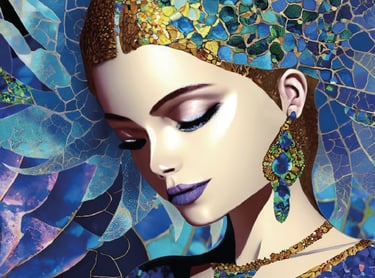

Useful Links
Policies
